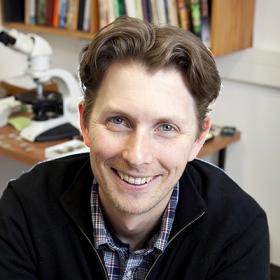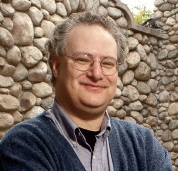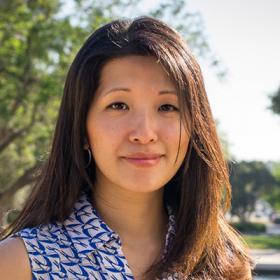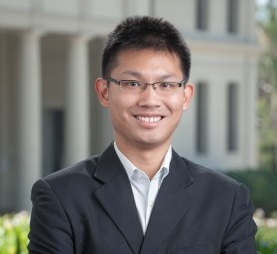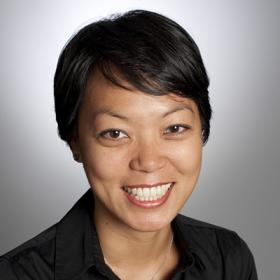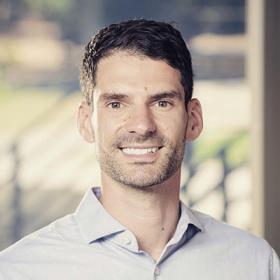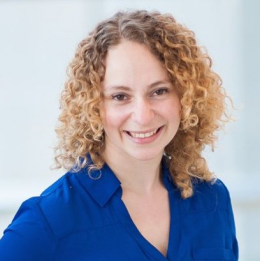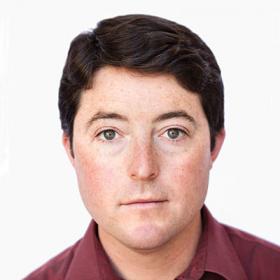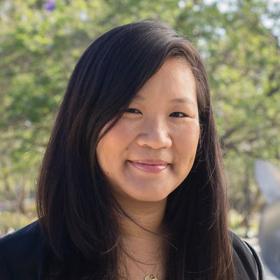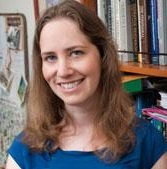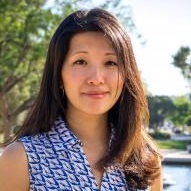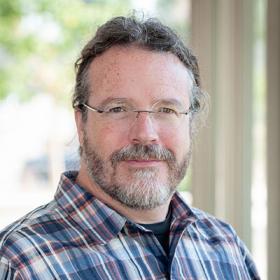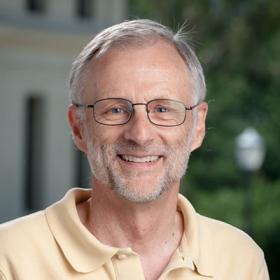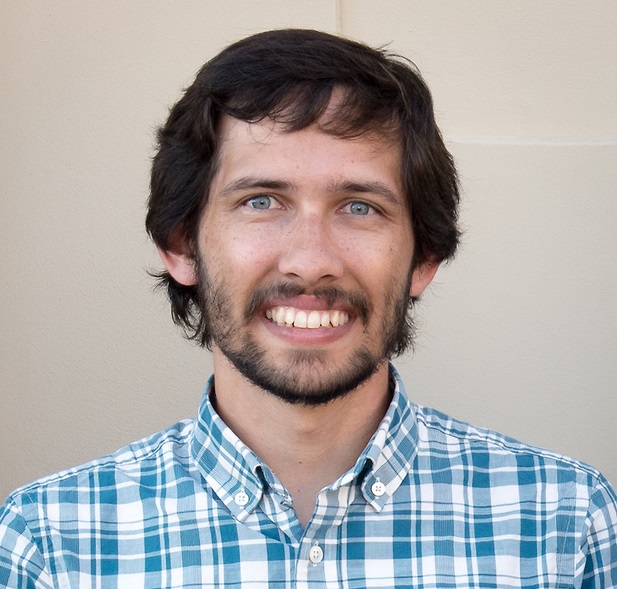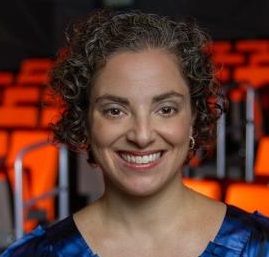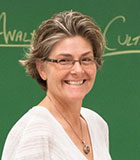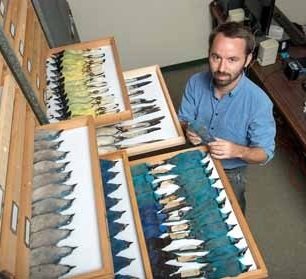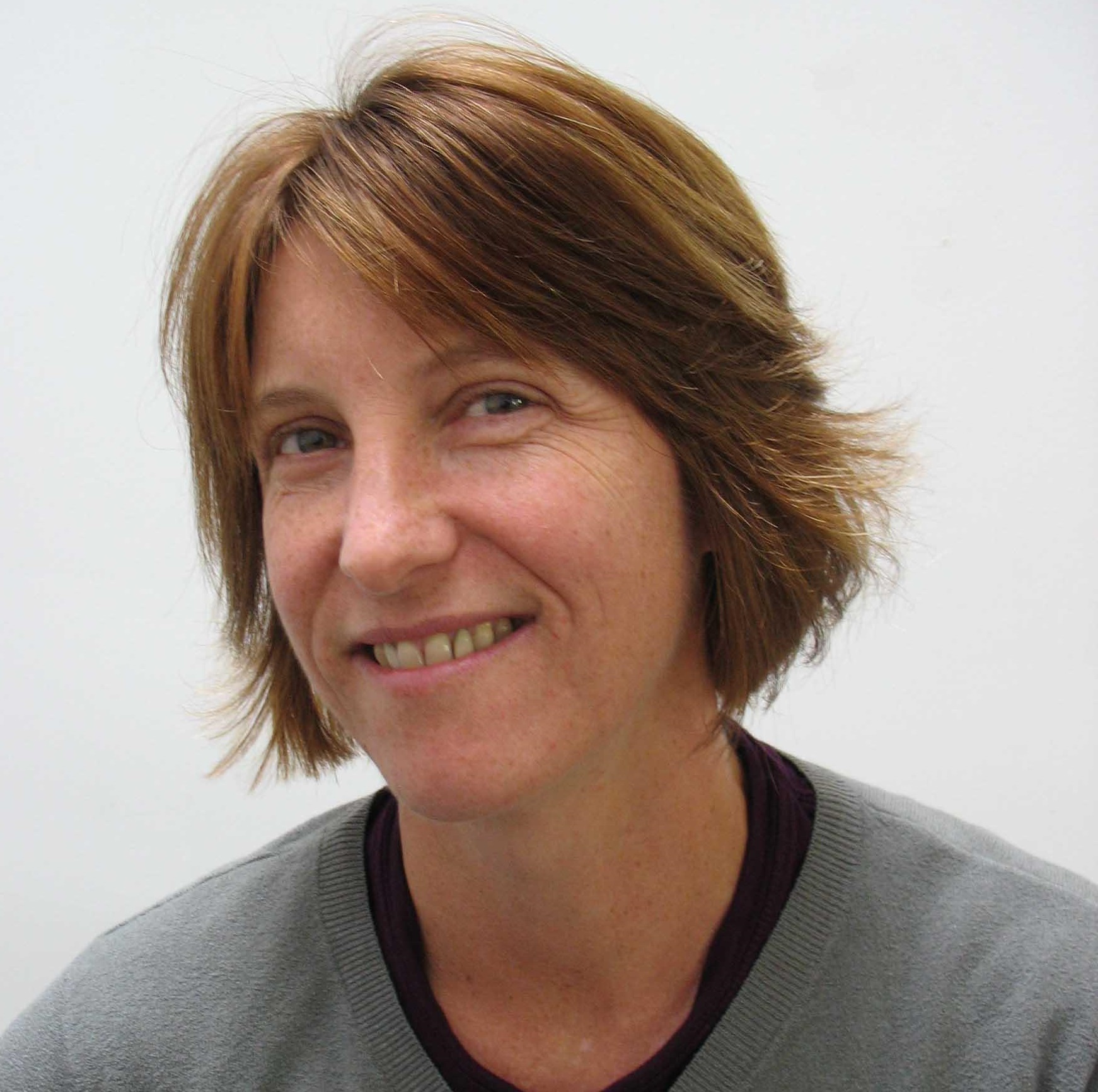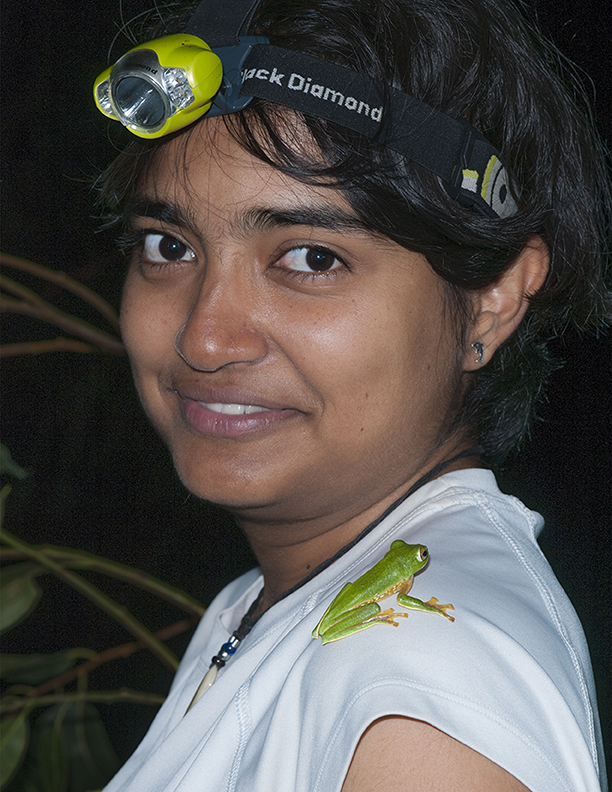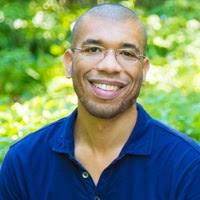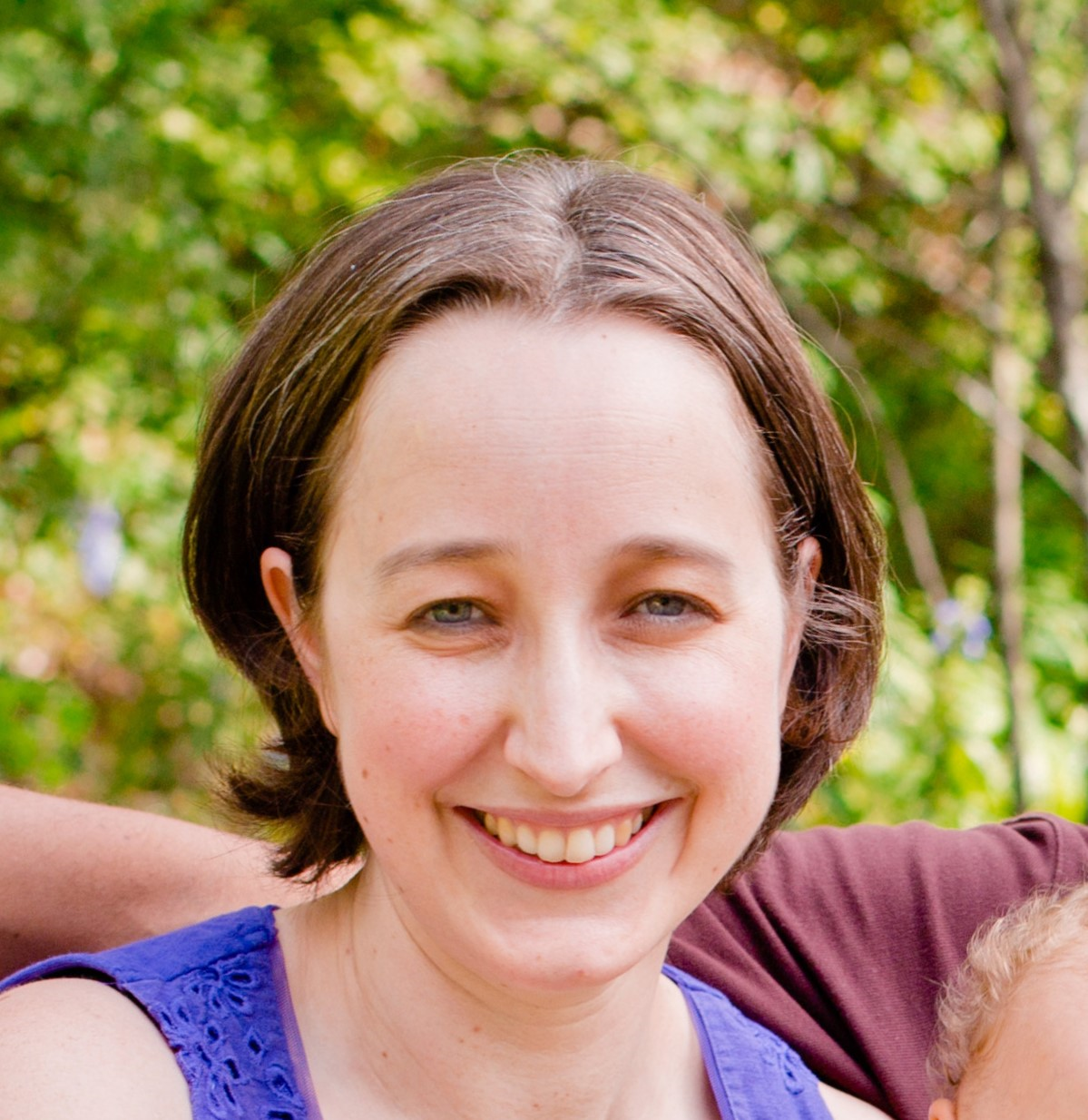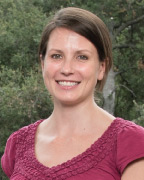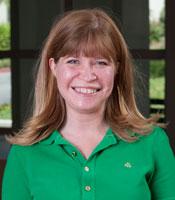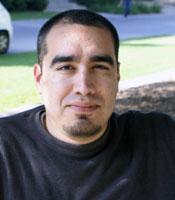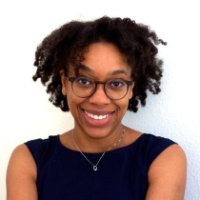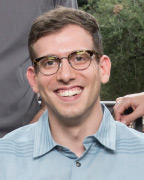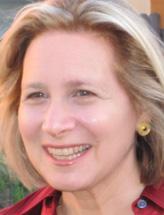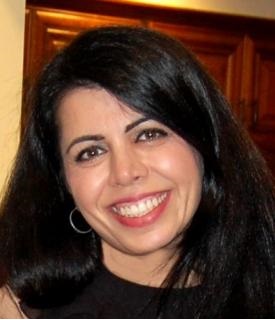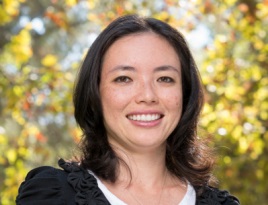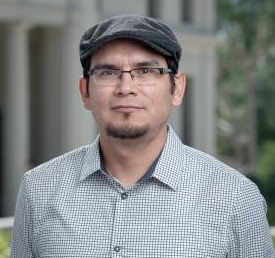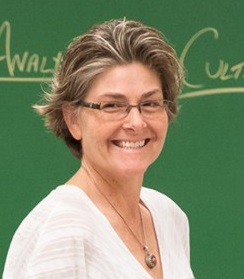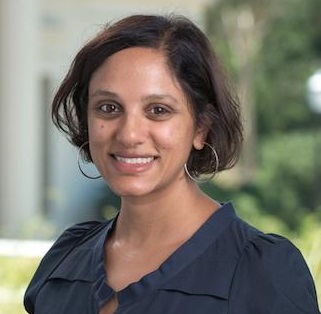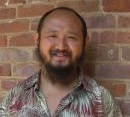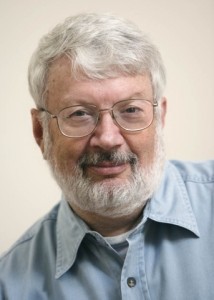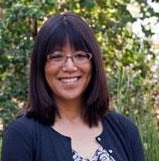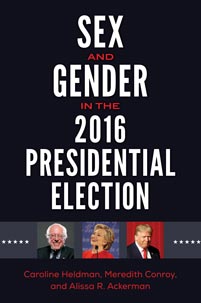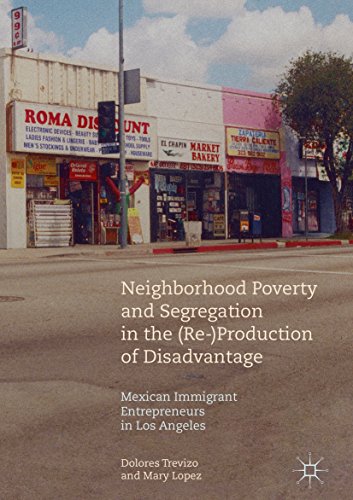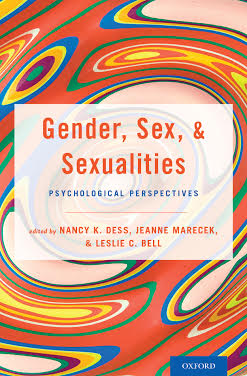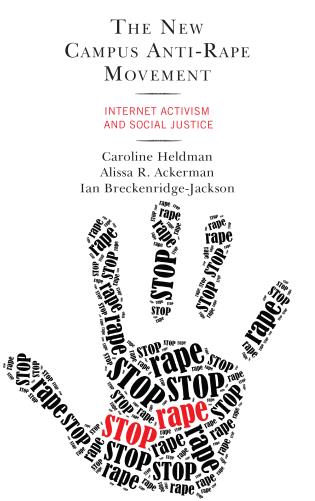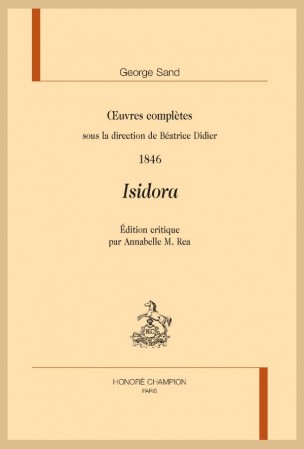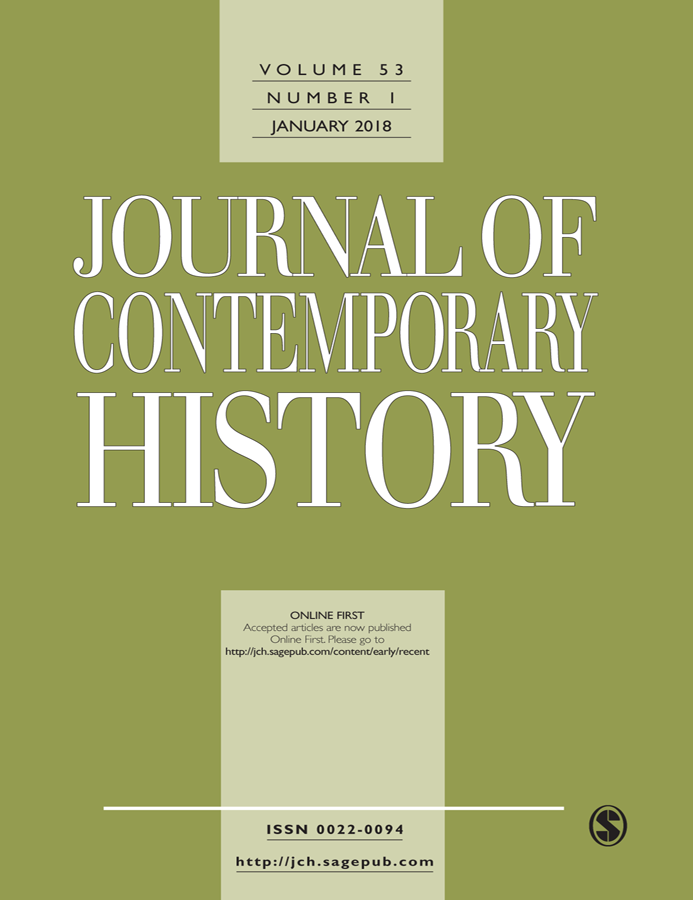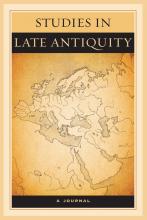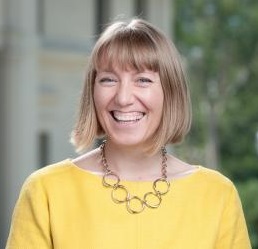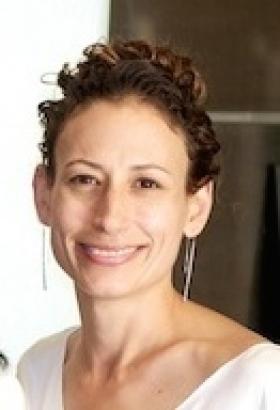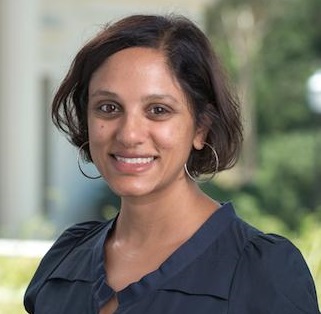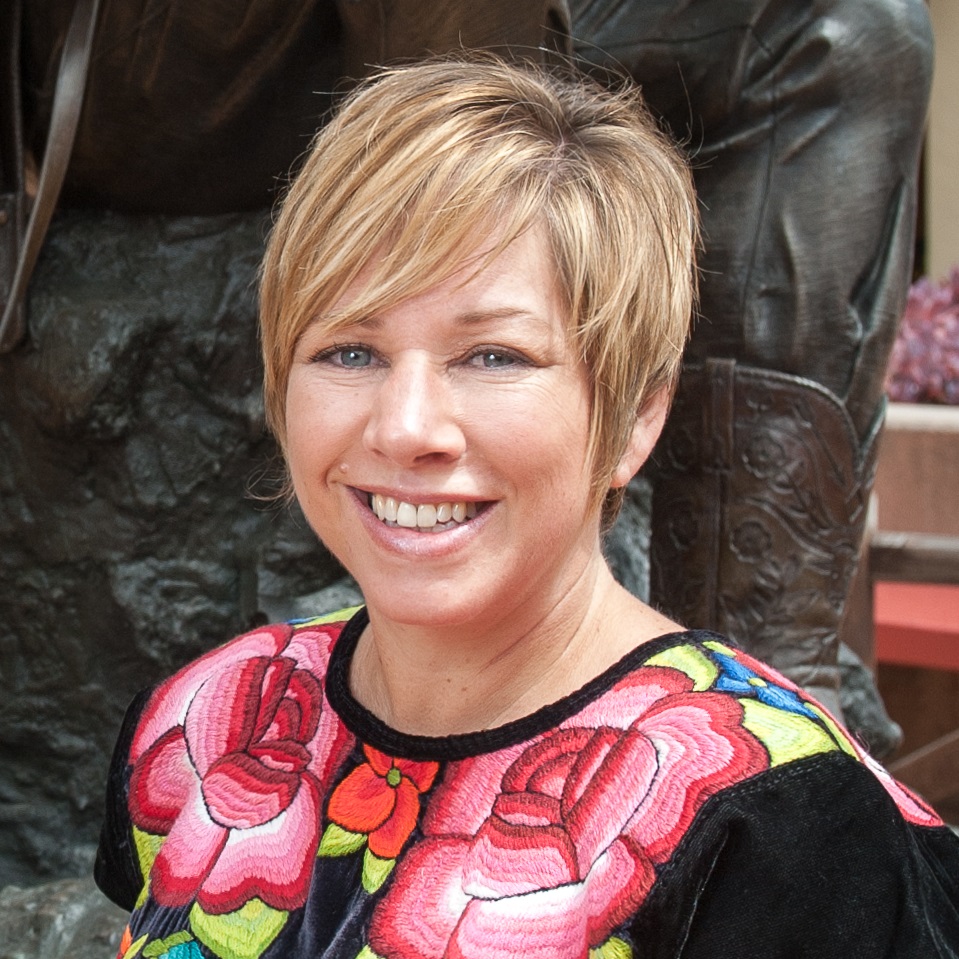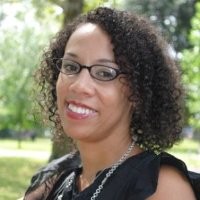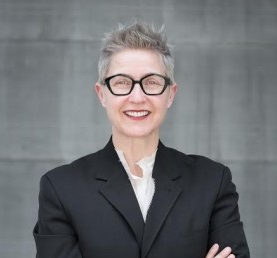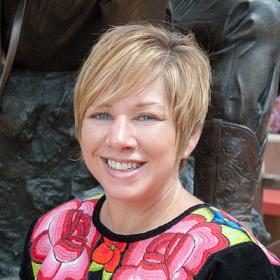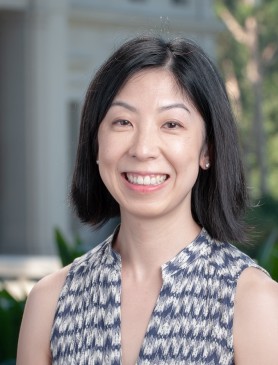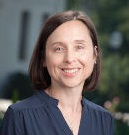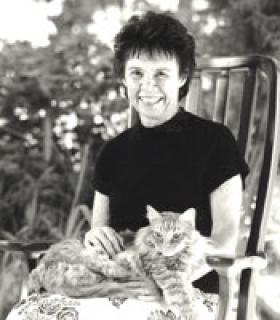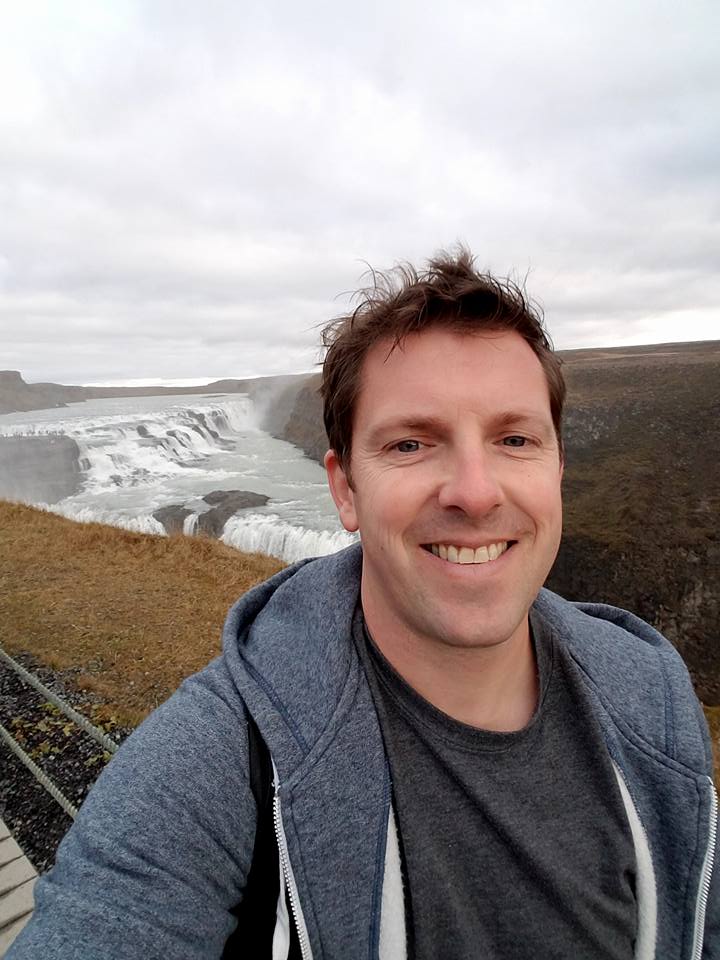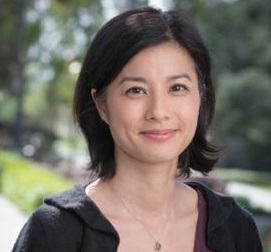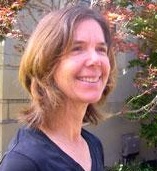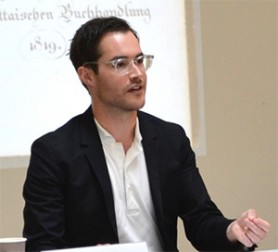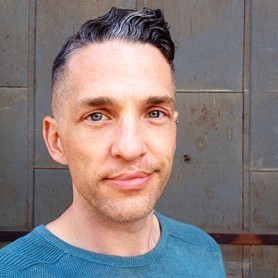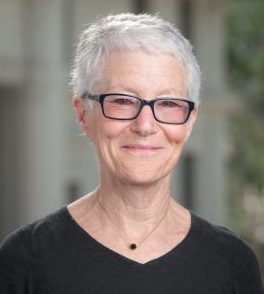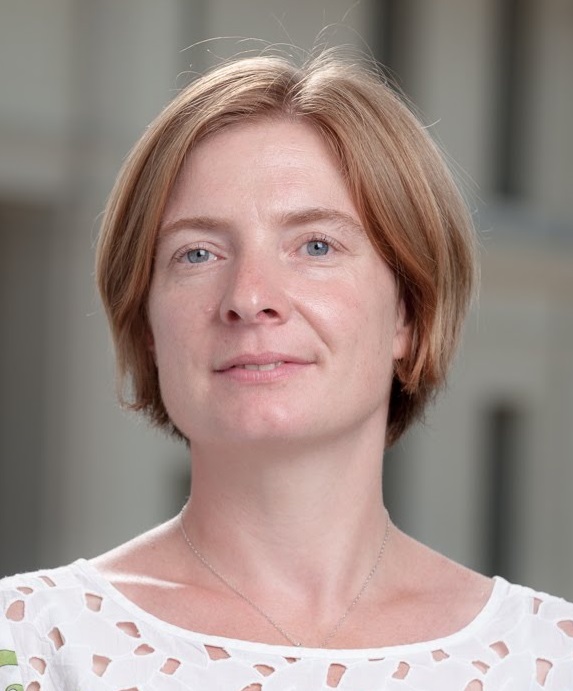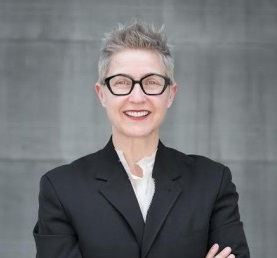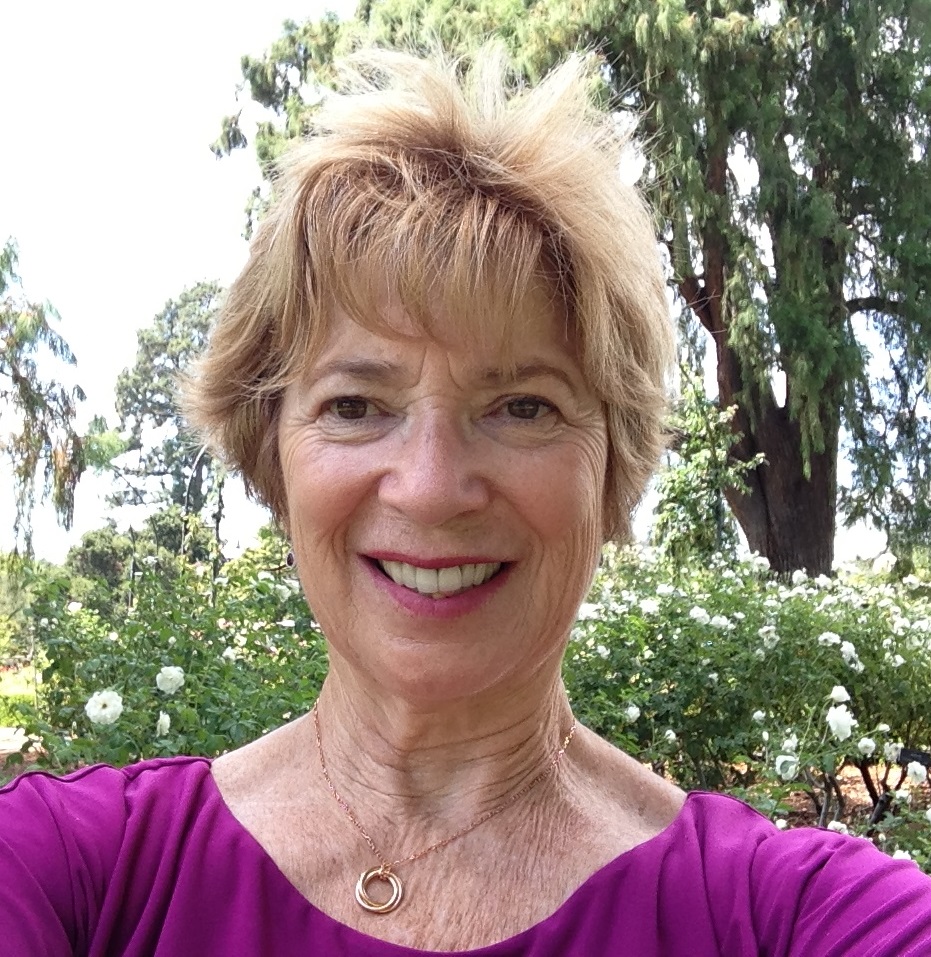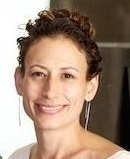Occidental faculty are hard at work. Check out their scholarly accomplishments from 2018.
Articles, Essays, and Chapters
Books & Edited Volumes
Grants, Fellowships & Residencies
Performances, Exhibits, Films, Scripts, and Compositions
Awards, Appointments, and other Accomplishments
Articles, Essays, and Chapters
| Prof. Chris Oze has published published three peer-reviewed articles with topics ranging from making concrete on Mars to finding new geothermal energy and Rare Earth Element (REE) resources on Earth: “Constructing Mars: Concrete and energy production from serpentinization products”; “Petrological and geochemical characteristics of REE mineralization in the A-type French Creek Granite, New Zealand”; “Soil δ 13 C-CO 2 and CO 2 flux in the H 2 S-rich Rotorua Hydrothermal System utilizing Cavity Ring Down Spectroscopy.” This recent work will help with the future human habitation of Mars, as well as forwarding new methods to find energy and material resources. | |
| In the aftermath of World War II, American science fiction frequently turned to the trope of the autonomous nuclear family homesteading the cosmos in their own little space ship. In a newly published article, Prof. Jeremiah Axelrod argues that this particular depiction of family reflects an ideology of frontier nostalgia, but it also almost inevitably conflates fatherly patriarchal authority with the strictures of naval discipline, providing an unsettling note of authoritarian tyranny in a genre intended to reinforce ideologies of “togetherness” and the comfortable “natural” order of familial authority. Analyses of Robert Heinlein’s The Rolling Stones, TV series Lost in Space and Star Trek, Becky Chambers’s The Long Way to a Small, Angry Planet, Disney’s Miles from Tomorrowland, and the graphic novel series Saga trace the decline of the “retrospective utopian” patriarchal family model and counterbalance it with the emergence of new, more flexible family authority structures appropriate to the twenty-first century. | |
| Prof. Jane Hong published a new article, "Manila Prepares for Independence: Filipina/o Campaigns for U.S. Citizenship and the Reorienting of American Ethnic Histories.” Drawing from both Philippine and U.S. sources, Hong charts the curious history of how the Philippine government championed U.S. citizenship eligibility for Filipina/os during World War II in an effort to encourage Filipina/o Americans' financial support for the Philippines in the form of remittances. This history illustrates how states have long maintained relationships with their citizens abroad with the goal of enriching the power, wealth, or prestige of the home government. | |
| Films can be powerful tools in teaching environmental studies. In this recent publication in the Journal Environmental Studies and Sciences, Prof. John Chung-En Liu and two sociology majors Huijing Huang '18 and Jing Ma '18 examined 36 environmental documentaries on China for their content, theme, production, and reception with a view towards using them as teaching tools. In their analysis, the films roughly fall into five categories: (1) globalization and global environmental justice, (2) urbanization and displacement, (3) human-nature relationships, (4) the fossil fuel economy, and finally, (5) civil society and the environmental movement. The paper is intended to serve as a "viewing guide" for students and scholars to learn about China’s environmental challenges through films. | |
| Prof. Mijin Cha contributed a chapter to the first edition of the Routledge Handbook of Climate Justice. Prof. Cha's chapter, “From the Dirty Past to the Clean Future: Addressing historic energy injustices with a just transition to a low-carbon future,” leads off the section on Just Transition, which aims to protect marginalized communities and workers in the transition to a low-carbon future. Prof. Cha argues that injustices placed upon communities and workers in past and current extractive activities must be addressed in order for there to be an equitable transition to a low-carbon future. | |
| Prof. Philip Ayoub published a new essay, "EU Law as an (In)Direct Source of LGB Rights across Europe," that is concerned with the question of why LGBT rights legislation is introduced at higher levels in some cases and less so in others. To address this puzzle, the paper analyzes changes in LGBT rights legislation across European Union (EU) member states between 1970 and 2009. It focuses on the diffusion of five different categories of LGBT legislation (anti-discrimination, criminal law, partnership, parenting rights, and equal sexual offenses provisions) to new EU member states in Central and Eastern Europe, in comparison to diffusion patterns in older EU member states. I argue that new-adopter states are more dependent on international resources for making new issues visible and are more inclined to see adoption as a means to gain external legitimacy and improve their reputation. | |
| In her article "Exploring the bounds of our sensory realities through art and neuroscience" written for SciArt Magazine's Special Topics Issue: "How can art influence science?", Prof. Aleksandra Sherman reflects on the importance of engaging with the visual arts for her own scientific practice. Specifically, she describes her experiences of James Turrell’s light installations at the LACMA (Breathing Light and Light Reignfall), compares these experiences to sensory deprivation, describes how his immersive environments raise fundamental questions about the nature of our mind and brain, and explores the ways in which engaging with his art (and with visual art in general) has informed her scientific research in multisensory perception and consciousness. | |
| Young children often deny that improbable events are possible. Prof. Andrew Shtulman and co-authors examined whether children aged 5–7 (N = 300) might have more success in recognizing that these events are possible if they considered whether the events could happen in a distant country. Children heard about improbable and impossible events (Experiments 1A, 1B, and 2) and about ordinary events (Experiment 2) and either judged whether the events could happen in a distant country or locally (Experiments 1A and 2) or with their location unspecified (Experiment 1B). Children were more likely to judge that extraordinary events could happen in a distant country than when the same events were described locally or with location unspecified; also, older children were more likely to deny these events could happen when they were local compared with when their location was unspecified. We also found some evidence that manipulating distance affects judgments more strongly for improbable events than for impossible one. Together, the findings show that children’s assessments of whether hypothetical events are possible are affected by the geographic context of the events. The findings, published in a new article, “Distant lands make for distant possibilities Children view improbable events as more possible in far-away locations,” are consistent with accounts holding that children normally assess whether hypothetical events are possible by drawing on their knowledge of the ordinary world but further suggest that children modify this approach when considering events in distant lands. | |
| In a recently published article, “Commuting to educational opportunity? School choice effects of mass transit expansion in Mexico City,” Prof. Diana Ngo and co-author Andrew Dustan (Vanderbilt University) studied the effects of a mass transit expansion on students' school choices in Mexico City. They find that a new train raised demand for elite and more distant schools, but only among high-achieving students with highly-educated parents. These students were also more likely to be assigned to elite and more distant schools under the test-based assignment mechanism. In contrast, there were few effects on the choices or assignments of lower-achievers or those with lower-education parents. Their results highlight the complementarities between transit access and school choice as well as the potential limitations of choice policies in large urban areas. | |
|
| Binocular rivalry occurs when two percepts, each presented to a single eye, compete for perceptual dominance. Across two experiments, Bobby Jertberg '17, Prof. Carmel Levitan, and Prof. Aleksandra Sherman investigated whether emotional music influenced perceptual dominance of an emotionally congruent face. In the first experiment, participants heard music (happy, threatening, none) while viewing a positive or negative emotional face pitted against a neutral face or emotional faces pitted against each other. Several key findings emerged. As expected, emotional faces significantly dominated over neutral faces, irrespective of music. For emotional face pairings, negative faces were predominantly reported as initial percepts. Interestingly, this negativity bias was transient and did not persist for the duration of the trial. Rather, positive faces dominated perception throughout trials. Moreover, emotional music affected rivalry dynamics such that congruent music drove attention toward congruent emotional percepts and incongruent music suppressed incongruent percepts. In a second experiment with the same group of participants, we investigated whether explicit attention modulated binocular rivalry of emotional faces. We demonstrated that attention affected both initial and sustained percepts by suppressing automatic emotional biases and stabilizing attention-congruent expressions. Together, our results demonstrate the importance of investigating multisensory expression perception in transient and sustained contexts, the role of emotion as a mediator of sensory integration across perceptual modalities, and the influence of attention on emotional competition in binocular rivalry.
|
| Prof. Jane Hong‘s new article, “A Cross-Fire between Minorities: Black-Japanese Relations and the Empire Quota in the Postwar Campaign to Repeal Asian Exclusion,” published in the Pacific Historical Review, explores a little-known episode of conflict between postwar efforts for immigration reform and the early black civil rights movement. | |
| Prof. Jacob L. Mackey’s latest article, "Das Erlöschen des Glaubens: The Fate of Belief in the Study of Roman Religion" (Phasis 20, 2017), traces the development of a scholarly consensus against any reference to belief in the study of Roman religion. The anti-belief position began with Christian disparagement of pagan worship and continued with late-20th-century anthropological relativism, according to which belief is a distinctively western, Christian phenomenon. After exposing the flaws in such views, he introduces the cognitive theory of intentionality. On this theory, all mental states represent or are about objects and circumstances in the world. He distinguishes two broad mental state types: the practical, such as desire, which represents circumstances as we would have them be, and the doxastic, such as belief, which represents circumstances as we take them to be. Insofar as the Romans represented circumstances as obtaining, they clearly had beliefs. Three payoffs follow from this approach. First, beliefs often underlie emotions, because emotions amount to our evaluations of states of affairs we take to obtain. So, when Romans attest to experiencing emotions in connection with religious events, researchers are licensed to ask about what beliefs might underlie those emotions. Second, beliefs (along with practical states) play a role in the etiology of action, because in order to act, agents require a cognitive map of the space of possibilities for action. This is provided in part by belief. So, when Romans attest to religious action, researchers are licensed to inquire into the beliefs that demarcated the parameters of the action. Finally, in representing objects and circumstances, beliefs represent them in a certain way, under a certain aspect, as this rather than as that. This puts beliefs at the foundations of social reality and social powers, for it is only by virtue of being represented as a pontifex that any Roman ever counted as (and so had the deontic powers of) a pontifex, and it is only by virtue of being represented as a sacrificium that any act of animal slaughter ever counted as a sacrificium (and thus carried the deontic aura proper to sacrificium). Thus, far from being an irrelevant category for researchers, belief turns out to be central to Roman religious cognition, religious action, and religious reality. | |
| Prof. Scott Bogue’s paper on "Correlated relative and absolute geomagnetic paleointensities from a Pliocene N-R polarity reversal record in basaltic lava flows on Kauai, Hawaii" appeared in the December 2018 issue of Geochemistry, Geophysics, Geosystems, an electronic journal published by the American Geophysical Union. The study involves oriented rock samples collected from Kauai in 1978 as part of his PhD research. In the early 90's, Oxy students and Prof. Bogue worked on the collection for three summers attempting to reconstruct a history of how the geomagnetic intensity varied as the field was reversing polarity 5 million years ago. Unfortunately, that work yielded just a handful of reliable results. But the old work has proved to be invaluable. Prof. Bogue used it to validate and calibrate a new data set generated last year from the same samples by a somewhat controversial technique. The study provides new details on how the geomagnetic field behaves when switching between normal and reverse polarity. | |
| Neuroscience investigations are most often focused on the prediction of future perception or decisions based on prior brain states or stimulus presentations. However, the brain can also process information retroactively, such that later stimuli impact conscious percepts of the stimuli that have already occurred (called “postdiction"). Postdictive effects have thus far been mostly unimodal (such as apparent motion), and the models for postdiction have accordingly been limited to early sensory regions of one modality. Prof. Carmel Levitan and colleagues have discovered two related multimodal illusions in which audition instigates postdictive changes in visual perception. In the first illusion (called the “Illusory Audiovisual Rabbit"), the location of an illusory flash is influenced by an auditory beep-flash pair that follows the perceived illusory flash. In the second illusion (called the “Invisible Audiovisual Rabbit"), a beep-flash pair following a real flash suppresses the perception of the earlier flash. Thus, we showed experimentally that these two effects are influenced significantly by postdiction. The audiovisual rabbit illusions indicate that postdiction can bridge the senses, uncovering a relatively-neglected yet critical type of neural processing underlying perceptual awareness. Furthermore, these two new illusions broaden the Double Flash Illusion, in which a single real flash is doubled by two sounds. Whereas the double flash indicated that audition can create an illusory flash, these rabbit illusions expand audition’s influence on vision to the suppression of a real flash and the relocation of an illusory flash. These new additions to auditory-visual interactions indicate a spatio-temporally fine-tuned coupling of the senses to generate perception. | |
| Amino acids are the functional building blocks of proteins and serve as important starting materials in the de novo synthesis of biologically active small molecules. Syntheses of amino acids, especially those that are unnatural, or cannot be derived from nature, enable the study of synthetic proteins as well as expand access to complex small molecule substructures. Prof. Jeff Cannon's lab, including student co-authors Natalie Dwulet '17, Tina Zolfaghari '18, and Molly Brown '18, recently reported a new method for the synthesis of natural and unnatural amino acids that is selective for a single three-dimensional atomic arrangement, or stereoisomer, which is key to their function. Using a chiral sulfinamide auxiliary, enolate alkylation is achieved with good control of the stereochemistry of the newly formed carbon-carbon bond. This reaction is general, selective, and the products can be readily converted to useful amino acid substructures and poly-peptides. | |
| Prof. Jennifer Piscopo's co-authored article, "All Male Panels? Representation and Democratic Legitimacy" was published in the American Journal of Political Science, a top journal in the field, with an acceptance rate of less than 10 percent. As the abstract describes: Though scholars have demonstrated the substantive and symbolic benefits of women's representation, little work has examined how women's presence affects citizens' perceptions of democratic legitimacy. We test the relationship between representation and legitimacy beliefs through survey experiments on a nationally representative sample of U.S. citizens. First, we find that women's equal presence legitimizes decisions that go against women's interests. We show suggestive evidence that this effect is particularly pronounced among men, who tend to hold less certain views on women's rights. Second, across decision outcomes and issue areas, women's equal presence legitimizes decision‐making processes and confers institutional trust and acquiescence. These findings add new theoretical insights into how, when, and for whom inclusive representation increases perceptions of democratic legitimacy. | |
|
| Darwin’s finches are a classic example of natural selection and adaptive radiation, and have been the subject of over a century and a half of study to investigate how biogeography and dietary specialization can drive speciation. Here, Prof. Shana Goffredi, Prof. John McCormack, scientists at CalTech, and colleagues in Ecuador add a new dimension in our understanding of these iconic birds, through the lens of the gut microbiome. In this study, they describe the gut microbiome of over 120 individuals from 12 finch species, on 9 islands of the Galápagos, to determine how host species, biogeography, and diet specialization relates to gut microbiome composition. Of this large and diverse dataset, a singular bird species, the vampire finch Geospiza septentrionalis from Wolf and Darwin islands, was observed to host a distinct gut microbiome, likely attributed to its unusual blood feeding behavior. Carbon and nitrogen isotopic analysis determined that individual vampire finches are distinct from other finches, with isotopic signatures in their feathers that resemble top marine predators, confirming a dramatic shift in diet, behavioral, and now microbiome specialization. Interestingly, for the other 11 finch species analyzed in this study, the gut microbiome is remarkably stable, possibly reflecting their relatively recent radiation. The only significant influence on the gut microbial community for these species was the season during which the birds were collected (wet / dry). |
| Prof. Amy Lyford's essay "Embodiment and Visuality in John Divola's "Occupied Landscapes (Yosemite), 1989-1992" has just been published in Amy Scott, ed. The Art of the West: Selected Works from the Autry Museum (Norman, OK: University of Oklahoma Press, 2018). Drawing on close attention to Divola's photographic prints, a critical approach to the notion of "wilderness," the history of photography in Yosemite, and an interview with the artist, Lyford argues that his images engage us with the landscape of Yosemite not just as a pristine space, but as a visual field of the viewer's own making - a making marked by a modern form of occupation as tourists or photographers. | |
| Prof. Philip Ayoub's new article, “Intersectional and Transnational Coalitions during Times of Crisis: The European LGBTI Movement,” explores an overarching question that informs our understanding of political intersectionality in movement coalition building work: How do limited material resources affect the intersectional consciousness of social movements and the nature of their coalition building work? To answer this question, Prof. Ayoub conducted an expert survey to assess the intersectional consciousness of the European lesbian, gay, bisexual, trans, and intersex movement during times of financial crisis. He argues, somewhat paradoxically, that intersectional consciousness is most present at the transnational level, where the potential for brokering cross-movement relationships is high, and that the financial crisis has heightened that consciousness. | |
| Prof. Jacob L. Mackey’s chapter in the Routledge Handbook of Classics and Cognitive Theory (eds., Meineck, Short, and Devereaux), titled "Roman Ritual Orthopraxy and Overimitation," brings our evidence for ancient Roman ritual orthopraxy—i.e., the imperative to reproduce rituals according to a normative script with absolute precision—into contact with empirical studies from the cognitive sciences demonstrating the cross-cultural tendency of children and adults to imitate with high fidelity (i.e., to "overimitate") especially those actions that are "causally opaque," i.e., not obviously connected to as means to some outcome or end. He proposes that this tacit natural tendency to "overimitate" was culturally elaborated into explicit norms of Roman ritual performance. He argues, in addition, that his cognitive perspective on Roman orthopraxy explains the Roman penchant for "multiple aetiologies," i.e., the tendency of the causally opaque ritual system to produce a plurality of explanations for ritual while not privileging one over any other. Finally, he suggests that overimitation and orthopraxy can, perhaps paradoxically, be adduced to help explain ritual change in Roman religion. | |
| The conventional wisdom suggests that women have less political ambition than men. The notion that women can solve the problem of their political underrepresentation by just “leaning in” also informs candidate training programs. In a new article “The limits of leaning in: ambition, recruitment, and candidate training in comparative perspective” Prof. Jennifer Piscopo links scholarship on women’s candidate emergence to new research on women’s candidate training programs, reaching three conclusions about the gender ambition gap. First, institutional, organizational, and structural barriers limit women’s access to elected office more than their psychological predispositions. Second, most candidate training programs cannot address these systemic barriers. Third, the “lean in” frame reinforces notions that men are inherently capable, while women must overcome deficiencies in confidence or skills or both. | |
| New methods for the synthesis of carbon-carbon bonds are constantly being sought after. Prof. Jeff Cannon and his student co-authors - Nicholas Foy '17, Katherine Forbes '18, Anne Marie Crooke '19, and Maxwell Gruber '17 - reported the synthesis of a common structural fragment found in many biologically active natural products that utilizes visible light to promote a radical addition cascade. By the combination of Lewis acid and photoredox catalysis, an intramolecular umpolung addition of ketyl radicals to vinylogous carbonates was achieved to provide 2,6-dioxabicyclo[3.3.0]octan-3-ones in good yields. Although diastereoselectivities for this process were modest, an efficient Lewis acid-mediated epimerization allowed the conversion of minor diastereomers to the desired bicyclic product. | |
| Emerging Infectious Diseases (EIDs) are a major threat to wildlife and a key player in the declining amphibian populations worldwide. One such EID is chytridiomycosis caused by Batrachochytrium dendrobatidis (Bd), a fungal pathogen. Aetiology of Bd infection is poorly known from tropical frogs in Asian biodiversity hotspots. In a recently published paper, Adjunct Professor of Biology Lilly Eluvathingal and colleagues describe surveys carried out in four biodiversity hotspots to ascertain the status of Bd fungus. We collected a total of 1870 swab samples from frogs representing 32 genera and 111 species. Nested PCRs revealed low prevalence (8.4%) and high Bd haplotype richness was revealed after sequencing. We document 57 Bd Internal Transcribed Spacer region (ITS) haplotypes, of which 46 were unique to the global database. Bd ITS region showed indels at the Taqman binding site and qPCR reverse primer binding site, suggesting qPCR is unsuitable for diagnosis in Asian Bd coldspots. Our median-joining network and Bayesian tree analyses reveal that the Asian haplotypes, with the exception of Korea, formed a separate clade along with pandemic BdGPL (Bd Global Panzootic Lineage) haplotype. We hypothesise that the frog populations in Asian tropics might harbour several endemic strains of Bd, and the high levels of diversity and uniqueness of Bd haplotypes in the region probably resulted from historical host-pathogen co-evolution. | |
|
| Imagine that someone recovers relatively quickly, say, within two or three months, from grief over the death of her spouse, whom she loved and who loved her; and suppose that, after some brief interval, she remarries. Does the fact that she feels better and moves on relatively quickly somehow diminish the quality of her earlier relationship or constitute a failure to do well by the person who died? In their newly published chapter "Grief and Recovery," in The Moral Psychology of Sadness, Prof. Ryan Preston-Roedder and Mellon Postdoctoral Fellow Erica Preston-Roedder respond to two arguments that give affirmative answers to these questions. The first argument, which derives from the philosophical literature, states that recovering relatively quickly from grief over the deaths of people who are close to us is regrettable because it means that these people were relatively unimportant to us; and the second argument, which derives from classic literary discussions of grief, states that such a recovery is regrettable because it amounts to abandoning the person who died. Responding to these arguments helps us dissolve certain anxieties about whether we do well by the people we love when they die, and it helps us better understand what it means to cultivate good relationships with these people during their lives. |
| In “Migration and queer mobilisations: how migration facilitates cross-border LGBTQ activism,” Prof. Ayoub explores the relationship between migration and networks of transnational queer activism in Europe, arguing that migrant inflows increase the propensity for queer social movement organisations to orient their focus beyond the state. Existing social movement research suggests a characteristic common to activists who are most likely to facilitate and take part in cross-border activism: mobile histories of their own. Using the case of queer mobilisation, Ayoub and co-author Lauren Bauman bring into focus the mechanisms connecting migration and the proliferation of social movement organisations that champion queer causes transnationally (tSMOs). Migration contributes to new and unique continental ties between multi-national queer organisations. They argue that these ties change the landscape of queer activism in Europe by forming the bonds of solidarity across borders that lead to transnational queer mobilisation. This is largely because migrants’ identities are rooted in multiple spaces and thus trigger solidarity around a multi-faceted understanding of sexual plurality, putting new issues and contexts on the agenda for queer activism. They utilise a mixed-methods approach to show a strong relationship between migrant inflows and queer tSMOs, based on an original dataset spanning twenty-six European OECD countries and on qualitative interviews with migrant activists. | |
| Secular moral philosophy has devoted little attention to the nature and significance of faith, and it may seem that, because the importance of faith depends on the truth of theism, a study of faith has little to offer non-religious philosophy. But, in his new paper, "Three Varieties of Faith," Prof. Ryan Preston-Roedder argues that, whether or not theism is true, certain kinds of faith are centrally important virtues, that is, character traits that are morally admirable or admirable from some broader perspective of human flourishing. The paper discusses three varieties of faith that a virtuous person has in people: faith in herself, faith in her loved ones, and a form of faith in humanity. Coming to understand the roles that these forms of faith play in human life deepens our understanding of aspects of moral life and aspects of human flourishing that are poorly grasped. Furthermore, it helps us understand the relation between norms that govern our theoretical reasoning - in other words, our reasoning about what is true - and norms that govern our practical reasoning, in other words, our reasoning about how to act. | |
|
| Prof. John Chung-En Liu co-authored an article with John Zinda (Cornell) and Yifei Li (NYU-Shanghai), "China’s summons for environmental sociology" that was published in Current Sociology. In the article, the authors focus on four domains--environmental ideology, political economy, civil society and environmental justice, and international environmental politics--in which China’s experience compels us to rethink their theories, and suggest that, in each domain, China’s institutions, discourses, and place in the world-system reframe major currents of thought in environmental sociology. Their arguments urge environmental sociologists to decenter on how things happen within liberal polities in the global North; they likewise push us to reconsider arguments about the South. Together, these challenges present an opportunity to extend our theory and practice, fashioning a more global environmental sociology. |
| Prof. Mijin Cha, with her co-authors Jane Holgate and Karel Yon, published a paper entitled, "Emergent Cultures of Activism: Young People and the Building of Alliances Between Unions and Other Social Movements," in a special edition of the journal Work and Occupations. The special edition is the culmination of a 3-year, multi-country study of young workers and labor unions. This article considers emergent cultures of activism among young people in the labor movement. The authors question whether unions should reconsider creating different forms of organization to make themselves relevant to new generations of workers. The authors suggest that emerging cultures of activism provide unions with a way of appealing to wider and more diverse constituencies. | |
|
| As human activities continue to expand globally, there will be increased need to incorporate the impacts of these activities into ecological studies for a holistic understanding of ecosystems. Within the Southern California Bight, as in other highly productive marine ecosystems, fishing has long contributed to the ecology and evolution of marine fish and invertebrate communities. As fishing varies across space and over time, there is a need for a reliable metric that quantifies the spatiotemporal variation in the impact of fishing. In a new paper, "Long‐term, spatial marine harvest intensity as an indicator of human impact on shallow rocky reef ecosystems," co-authors, Profs. Amanda Zellmer and Dan Pondella, former Oxy instructor Jeremy Claisse, and Oxy alumna Chelsea Williams, quantify an index of harvest intensity on the highly productive and heavily fished, shallow rocky reefs of Southern California. To this end, they take advantage of two long-term, spatially explicit, multi-species datasets collected by the California Department of Fish and Wildlife on commercial and recreational marine harvest, combined with reef-species survey data and a geospatial reef data layer. Using this approach, they recover predictable patterns for harvest intensity across the Southern California Bight, with harvest intensity decreasing in fishing blocks located at greater distances from the nearest port. Further, our results indicate an important interaction effect between distance to nearest port and year on harvest intensity, suggesting there are important shifts in spatiotemporal patterns over the 30-year time period. As fishing can have numerous impacts on ecological and evolutionary processes, the observed spatiotemporal variation in harvest intensity illustrates the need for incorporating the contribution of human impacts into marine ecosystem studies. |
| Turbulent Rayleigh-Benard convection displays a large-scale order in the form of rolls and cells on lengths larger than the layer height once the fluctuations of temperature and velocity are removed. These turbulent superstructures are reminiscent of the patterns close to the onset of convection. In a newly published paper, Prof. Janet Scheel and co-authors report numerical simulations of turbulent convection in fluids at different Prandtl number ranging from 0.005 to 70 and for Rayleigh numbers up to 10^7 . They identify characteristic scales and times that separate the fast, small-scale turbulent fluctuations from the gradually changing large-scale superstructures. The characteristic scales of the large-scale patterns, which change with Prandtl and Rayleigh number, are also correlated with the boundary layer dynamics, and in particular the clustering of thermal plumes at the top and bottom plates. Their analysis suggests a scale separation and thus the existence of a simplified description of the turbulent superstructures in geo- and astrophysical settings. | |
| Prof. Kelema Lee Moses published a new article, “Economies of the City: Honolulu’s Financial Plaza of the Pacific." This article concerns one monumental architectural structure that defined Honolulu’s business economy and approaches to urban planning in the Central Business District (CBD) during the 1960s – the Financial Plaza of the Pacific. The design and construction of the edifice highlighted Hawai‘i’s physical location as a global crossroads. The international vision of this “commercial condominium", and by extension Honolulu, addressed the effects of urban blight and suburban flight that plagued the CBD in the years leading up to, and following, U.S. statehood. | |
|
| Profs. Richard Mora and Mary Christianakis co-authored a chapter, "College Men, Hypermasculinity, and Sexual Violence," in the newly released edited volume, Unmasking Masculinities: Men and Society. The chapter examines cultural norms and practices that promote hypermasculinity and sexual violence on college campuses. It pays particular attention to fraternity men and male athletes, who typically have more masculine status on campus than other men (Harris 2010), to highlight how college men participate or are complicit in sexual violence in order to strengthen bonds within their homosocial groupings and to construct their hypermasculine identities. It then discusses the anti-rape efforts of some college men on our campus, Occidental College, and examine both the role college men can play in ending sexual violence and how their actions can reiterate the existing patriarchal gender order. |
| Prof. Erica L. Ball's new article, "Style Politics and Self-Fashioning in Mamie Garvin Fields’s Lemon Swamp and Other Places," explores Southern black women’s engagement with beauty culture, fashion, and style politics at the turn of the twentieth century. Focusing on Mamie Garvin Fields’s personal history, Lemon Swamp and Other Places: A Carolina Memoir, the article interrogates the ways that middle-class and aspiring black women designed, deployed, and enjoyed fashionable clothes and stylish creations. It argues that in addition to serving as part of a larger project of black middle-class self-fashioning, these efforts were powerful assertions of black women’s humanity, individuality, and determination to thrive as black women in the context of Jim Crow. | |
| Dominant perceptions of religious fanaticism today tend to be as polemical and reductive as they were in the Reformation, the period when our modern conception of religious fanaticism first developed. Contemporary scholars share with canonical Reformation philosophers and theologians a sense of fanaticism as the incarnation of religion devoid of reason. Examination of the origins of the modern conception of religious fanaticism reveals, however, that it a term that emerged primarily to justify state violence against peasant revolts. Prof. Ross Lerner's new chapter, “Allegories of Fanaticism," traces the consequences of this entanglement of religious fanaticism and peasant rebellion for the dark new vision of allegorical poetry developed in Edmund Spenser’s The Faerie Queene. This essay explores how Spenser’s poem struggles to represent religious fanaticism with one metaphor and one simile—the “organ" of divine might and the “swarm" of flies, respectively—and it reveals the consequences these figures have for the poem’s consideration of Reformation theories of divine inspiration, political action, and peasant community. | |
| Prof. Marla Stone also published an essay, “Ways of Seeing: The Cult of Display in Fascist Italy," in an exhibition catalogue for the show Arti in Italia, 1918–1943 at the Prada Foundation in Milan. The essay analyzed the complex role played by exhibitions in the politics and propaganda of the Italian Fascist regime between 1922 and 1943. | |
| Young children have difficulty in distinguishing events that violate physical laws (impossible events) from those that violate mere physical regularities (improbable events). They judge both as ‘‘impossible." Young children also have difficulty in distinguishing events that violate moral laws (immoral events) from events that violate mere social regularities (unconventional events). They judge both as ‘‘wrong." In a newly published study, “Differentiating ‘could’ from ‘should’: Developmental changes in modal cognition," Prof. Andrew Shtulman shows that both difficulties arise from a more general deficit in modal cognition, or the way in which children represent and reason about possibilities. Preschoolers not only have difficulty distinguishing law-violating events from regularity-violating events but also have difficulty distinguishing the two modal questions themselves, judging physically abnormal events (e.g., floating in the air) as immoral and judging socially abnormal events (e.g., lying to a parent) as impossible. | |
| With a hostile federal administration, states must take up the fight against climate change. Shortly after the United States withdrew from the Paris Climate Accord, governors from several states announced efforts to meet the targets. In a new article, "A Just Transition: Why Transitioning Workers into a New Clean Energy Economy Should Be at the Center of Climate Change Policies," Prof. Mijin Cha argues that state level climate actions must consider the economic consequences of climate policy. A shift away from fossil fuels is a fundamentally necessary step in the fight against climate change. However, the economic impact of this shift will be felt most acutely by fossil fuel workers and communities, many of which are already facing economic hardships. Attention and resources must be focused on helping these workers and communities adapt to clean energy in a way that is fair and just, otherwise known as just transition. By failing to address the economic impact of moving away from fossil fuels, climate change will become a driver of inequality. Looking at examples in the United States and Germany, this article presents three elements necessary for a just transition program: dedicated funding streams, strong public sector role, and partnership with non-governmental organizations and unions. This article, looks at New York State’s recently announced Clean Climate Careers Initiative and analyzes it through the proposed just transition framework. | |
| In a new article, "Queering the Iranian Nation: Be Like Others and Resistance to Heternormative Nationalism," Prof. Amy Tahani-Bidmeshki argues that the documentary Be Like Others: Transsexual in Iran (2008) leverages a daunting challenge to the heteronormative narrative of the Islamic Republic of Iran, suggesting the impossibility of dominating, controlling, and disseminating a sense of nationalism connected to the gender-binary system of heteronormativity. The film reveals the Islamic Republic’s homophobia by nuancing the stories of trans Iranians beyond a desire to transform their bodies. Tahani-Bidmeshki suggests that the visual arts from the time of Qajar paintings to the present-day form in the documentary Be Like Others highlight the tensions between nation-building and gender/sexuality transformations as requisite to nationalism and belonging. Despite the Qajars’ and Islamic Republic’s “art of governmentality" visual representations of gender and sexuality powerfully contend with national self-narratives of heteronormativity and challenge the government’s representation of the nation inside and outside of Iran. | |
|
| In a newly publised paper, Prof. Cheryl Okumura, Prof. Gary Martin, and Oxy undergrad and post-doc co-authors explore the role of mast cells, a type of immune cell normally associated with allergic reaction, in controlling bacterial infection. Mast cells typically release proteins such as enzymes, antimicrobial peptides and histamine, and may do so to control some types of bacterial infections. They found that Group A Streptococcus, the bacterial species that causes strep throat, impetigo, scarlet fever and flesh eating disease, prevents mast cells from releasing these proteins. However, by preventing these proteins from being released, mast cells instead form extracellular "traps" consisting of their own DNA mixed with these proteins, that can kill these bacteria. Thus, mast cells act in an unconventional way to help control bacterial infection. This may be a way for the immune system act in a manner that does not cause damage to the host. |
| Prof. Ed Johnson’s newly published article, “Arnold Dolmetsch’s ‘Green Harpsichord’ and the Musical Arts and Crafts," uses Arnold Dolmetsch’s “Green Harpsichord" as a starting point for a larger discussion of the relationship between Arnold Dolmetsch, William Morris, and other members of the Arts and Crafts movement who were active in London in the 1890s. Built in 1896 and displayed that same year by the Arts and Crafts Exhibition Society, the Green Harpsichord was the harpsichord built in England in nearly a century, and its design and decoration reflect its position as an object that had to negotiate the aesthetics of the past and the practical needs of the present. The article concludes by looking at how the relationship between the early music revival and the Arts and Crafts movement. At a time when many in the musical establishment were saw early music as little more than a curiosity, the enthusiastic support from Herbert Horne, William Morris, and others within the Arts and Crafts community did much to validate Dolmetsch’s efforts, not only by providing him with spaces to perform and exhibit, but also by promoting an aesthetic ideal that was particularly well-matched to his work. | |
| Prof. John McCormack published a new study that identifies two new species of scorpion native to Southern California. Morphologically conserved taxa such as scorpions represent a challenge to delimit. Prof. McCormack and co-authors recently discovered populations of scorpions in the genus Kovarikia Soleglad, Fet & Graham, 2014 on two isolated mountain ranges in southern California. The authors generated genome-wide single nucleotide polymorphism data and used Bayes factors species delimitation to compare alternative species delimitation scenarios which variously placed scorpions from the two localities with geographically adjacent species or into separate lineages. The authors also estimated a time-calibrated phylogeny of Kovarikia and examined and compared the morphology of preserved specimens from across its distribution. Genetic results strongly support the distinction of two new lineages, which the authors describe and name here. Morphology among the species of Kovarikia was relatively conserved, despite deep genetic divergences, consistent with recent studies of stenotopic scorpions with limited vagility. Phylogeographic structure discovered in several previously described species also suggests additional cryptic species are probably present in the genus. Read more here. | |
| Prof. Scott Bogue's new paper, "Directional change during a Miocene R-N geomagnetic polarity reversal recorded by mafic lava flows, Sheep Creek Range, north central Nevada, USA" reports research on a stack of lava flows in Nevada that just happened to erupt while the geomagnetic field was reversing 15.2 million years ago. The faint and ancient magnetism of the lava flows preserves a record of how the field direction changed as the polarity switch was occurring. What the authors saw is that the transitional field tended to return to particular orientations as the reversal proceeded. Remarkably, the magnetic field in the western US tended to point in these same particular directions during two other geomagnetic polarity reversals occurring millions of years earlier. These observations join a growing body of evidence suggesting a connection between the solid rock that roofs the core – the lowermost mantle – and the flow of molten metal directly beneath it. | |
| Prof. Diana Ngo published a paper, "A theory-based living standards index for measuring poverty in developing countries" in the Journal of Development Economics. Living standards indices based on asset ownership are increasingly being used to describe poverty in developing countries. Yet, less work has been done on constructing meaningful weights using economic theory. In the paper, Ngo uses economic theory to develop a novel, cardinal index of living standards by estimating household preferences for durable goods and utilities. She applies this index to measure living standards over time in Malawi, Nicaragua, and Bulgaria and demonstrates its advantages over commonly used but atheoretical methods. She ends by discussing potential applications to tracking poverty and inequality and addresses methodological issues of spatial aggregation, temporal variation, and quality differentiation. | |
| Firms play a critical role in the global economy. This role is the focus of Prof. Jesse Mora’s newly published article, “Firms in International Trade," coauthored with Alan Spearot (UCSC) and Federico Diez (The Federal Reserve Bank of Boston). The paper surveys the behavior of firms in the international economy, both in theory and in the data. The authors first summarize the key empirical facts that motivate the study of firms in trade. Then, they detail recent theoretical developments on the micro-foundations of firm behavior in an international context, focusing on how firms select into exporting, and how firms respond to international shocks. Finally, they turn to a “real world," empirically focused view of exporting, beginning with the growth dynamics of firms expanding to global markets, and then addressing the critical financing decisions firms make when engaging in international commerce. | |
| Prof. Amanda Zellmer has published two papers this year. In the first article, “Microgeographic morphological variation across larval wood frog populations associated with environment despite gene flow," she investigates the role of gene flow and environment on morphological variation across larval wood frog populations using a common garden experiment paired with population genetic structure analyses. The results indicate that wood frog larvae show fine-scale morphological variation across ponds consistent with environmental differences and regardless of high levels of gene flow. This research adds to the growing body of evidence demonstrating that evolutionary divergence can occur despite connectivity among populations. Predicting the spread of invasive species is crucial for successful management and prevention of these species. Yet, potential models of spread can be difficult to evaluate when invasions are new and there are little data to test the models. Prof. Zellmer's second new paper, "Comparison of model selection technique performance in predicting the spread of newly invasive species: a case study with Batrachochytrium salamandrivorans", compares performance different model selection techniques for assessing spatial models in predicting the spread of newly invasive species. The authors conducted a simulation and used a real world case study of the newly emergent fungal pathogen, Bsal (Batrachochytrium salamandrivorans), which primarily infects salamanders. Their results demonstrate that model selection methods that do not rely on absence data perform better than methods that do use absence data. They argue that this result is due to the fact that newly invasive species have not yet reached an ecological equilibrium and thus absence data are uninformative and potentially misleading. Their results suggest that a model including habitat suitability, salamander species richness, and number of salamander imports best predicts the spread of Bsal. | |
| Prof. Shana Goffredi published two papers in February. In the first paper, “An inordinate fondness for Osedax (Siboglinidae: Annelida): Fourteen new species of bone worms from California," Goffredi and co-authors incorporate DNA sequences from a comprehensive sampling of taxa to provide an updated phylogeny of Osedax and discuss the remarkable diversity of this clade of siboglinids. They formally describe 14 new species of Osedax from Monterey Bay, California, USA, raising the total number of properly named Osedax species to 25. These new species had formerly been recognized by informal names in various publications, and on GenBank. The descriptions document the occurrence of dwarf males in five of the new species. The distribution for the 19 species of Osedax known to occur in Monterey Bay across depths from 385 to 2898 meters and various bone substrates is documented. The exploitation of extant bird and marine turtle bones by Osedax is reported for the first time. Phytophagous stink bugs are globally-distributed and many harbor vertically-inherited bacterial symbionts that are extracellular, yet little is known about how the symbiont’s genomes have evolved under this transmission strategy. Genome reduction is common in insect intracellular symbionts but limited genome sampling of the extracellular symbionts of distantly-related stink bugs has precluded inferring patterns of extracellular symbiont genome evolution. To address this knowledge gap, Prof. Shana Goffredi and her co-authors completely sequenced the genomes of the uncultivable bacterial symbionts of four neotropical stink bugs of the Edessa genus, discussing their findings in a newly published article, “Cladogenesis and Genomic Streamlining in Extracellular Endosymbionts of Tropical Stinkbugs." Phylogenetic and comparative analyses indicated that the symbionts form a clade within the Pantoeagenus and their genomes are highly-reduced (∼0.8 Mb). Furthermore, genome synteny analysis and a jackknife approach for phylogenetic reconstruction, which corrected for long branch attraction artifacts, indicated that the Edessa symbionts were the result of a single symbiotic event that was distinct from the symbiosis event giving rise to Candidatus “Pantoea carbekii", the extracellular symbiont of the invasive pentatomid stink bug, Halyomorpha halys. Metabolic functions inferred from the Edessasymbiont genomes suggests a shift in genomic composition characteristic of its lifestyle in that they retained many host-supportive functions while undergoing dramatic gene loss and establishing a stable relationship with their host insects. Given the undersampled nature of extracellular insect symbionts, this study is the first comparative analysis of these symbiont genomes from four distinct Edessa stink bug species. Finally, the authors propose the candidate name ‘Candidatus Pantoea edessiphila’ for the species of these symbionts with strain designations according to their host species. | |
|
| This research is a collaboration among Oxy faculty and students, communities living on the front lines of neighborhood oil development in Los Angeles, and researchers at the University of Colorado, Boulder. Through a community based participatory research model (CBPR), the authors, including Oxy's Prof. Bhavna Shamasunder (UEP), Jessica Blickley (CDLA), and Prof. Jim Sadd (Geology) collected a random sample of over 200 self-reported health surveys in a 1500-ft buffer of two oil developments in South Los Angeles. Their research findings were published in a new article, "Community-Based Health and Exposure Study around Urban Oil Developments in South Los Angeles." They found higher (statistically significant) rates of asthma for residents within the buffers as compared to LA city and county. They also tested the use of low-cost air monitoring sensors to identify a methane "fingerprint" of exposure from the oil wells, a challenge in a neighborhood with multiple hazardous pollution sources. |
| Carbon markets have become the most prominent policy tool to address climate change. Yet, scholars and policymakers often view the construction of such markets as a matter of political will. Carbons, however, might not be commodified so readily as people assumed. In a newly published article, "Pacifying uncooperative carbon: examining the materiality of the carbon market," Prof. John Liu highlights the importance of carbon’s diverse materialities during the construction of carbon markets. His findings indicate that, even for one of the most ‘cooperative’ carbons—the empirical case of coal-fired power plants, measurement uncertainties are significant and pose challenges for the marketization of carbon emissions. | |
| Advances in DNA sequencing technology open new possibilities for public health genomics, especially in the form of general population preventive genomic sequencing (PGS). Such screening programs would sit at the intersection of public health and preventive health care, and thereby at once invite and resist the use of clinical ethics and public health ethics frameworks. Despite their differences, these ethics frameworks traditionally share a central concern for individual rights. In a newly published paper, “The Ethics of General Population Preventive Genomic Sequencing: Rights and Social Justice" Prof. Clair Morrissey and co-author Rebecca Walker examine two putative individual rights—the right not to know, and the child’s right to an open future—frequently invoked in discussions of predictive genetic testing, in order to explore their potential contribution to evaluating this new practice. Ultimately, they conclude that traditional clinical and public health ethics frameworks, and these two rights in particular, should be complemented by a social justice perspective in order to adequately characterize the ethical dimensions of general population PGS programs. | |
| In his theoretical paper, “Protean Power in Movement: Navigating Uncertainty in the LGBT Rights Revolution,” Prof. Philip Ayoub applies the concepts of protean and control power to understand transnational advocacy surrounding LGBT rights. Using the cases of the European Union and the Council of Europe, Ayoub rethinks the hard mechanisms of conditionality—a type of control power—often associated with the successful transfer and diffusion of rights. Importantly, the control power driving these conceptions of sexuality as human rights can also lead to the inflation of threat in multiple domestic contexts. As such, control power, in the form of hard law diffusion, has had the effects of affirmation and refusal, often provoking resistance and repression. When it does, it changes the experience of actors on the ground, departing from conventional expectations and making their surroundings more uncertain. Ayoub argue that local advocates navigate this uncertainty with practices of improvisation and innovation that are inherent to the concept of protean power. Faced with competing claims about new norms governing sexuality – especially those that conflate sexual rights with the external imposition of “western” power – local advocates reply with translation to generate resonance for LGBT rights claims. They are attentive to the realities that remain invisible from the top and help to generate transformative change in world politics. | |
| The eastern Himalayan region has long been associated with its commodities, including tea, timber, flowers, and tourism. However, as these commodities have ebbed and flowed with broader socio-political changes, one form of economy has remained constant: Kalimpong’s sacred economies, based around its institutions and production and trade of sacred objects. In a newly published essay, “Sacred Economies of Kalimpong: The Eastern Himalayas in the Global Production and Circulation of Buddhist Material Culture," Prof. Amy Holmes-Tagchungdarpa sketches out the contours of the materiality of Kalimpong’s Buddhist material culture by outlining the processes of production and distribution attached to religious objects produced and procured in Kalimpong, and explores more generally questions of value and identity in the creation and consumption of material religion. | |
| Prof. Jennifer Piscopo guest-edited the Winter 2017 issue of Social Politics, entitled "The Left and Gender Equality: Achievements, Setbacks, and Variation after Latin America's Pink Tide." Prof. Piscopo coauthored the volume's introduction, in which she and co-authors argue that, contrary to expectations, left governments do not voluntarily move forward with gender equality initiatives; rather, they only make progress when pressured by feminist activists. Prof. Piscopo also curated and edited the articles in the issue, and coauthored an article on women's access to legislative nominations. In her article, Prof. Piscopo, Magda Hinojosa, and Kendall Funk, "Still Left Behind: Gender, Political Parties, and Latin America’s Pink Tide," use time-series data to demonstrate that left parties do no better than right parties at nominating women. Instead, parties of all ideologies become more reluctant to nominate women as voters disprove of economic performance and as traditional parties fragment. | |
| Sikkimese Bhutia language oral traditions feature an abundance of stories related to human-animal interactions. In order to begin to critically consider the significance of these interactions, Prof. Kalzang Dorjee Bhutia's new article, "Foxes, Yetis, and Bulls as Lamas: Human-Animal Interactions as a Resource for Exploring Buddhist Ethics in Sikkim" engages with these oral traditions and what they can tell us about local traditions of Buddhist ethics. Although some of these tales seem anthropocentric because humans overpower and outwit animals, others are more ambiguous. In this ethical universe, foxes, yetis, and magical bulls all act as agents and, at times, religious teachers, reminding humans of the Buddhist theme of interconnectedness in their interactions with the environment. This article is a starting point for considering how such tales can act as a rich resource for negotiating ambiguous forms of ecocentrism in local Buddhist practice and narrative in the Eastern Himalayas. | |
|
| Earlier this year, Prof. Peter Dreier and Prof. Martha Matsuoka (with their co-authors) published a report, “Working for the Mouse: A Survey of Disneyland Resort Employees," underwritten by the Coalition of Resort Labor Unions. The report drew a wide range of media coverage, including in the Los Angeles Business Journal, PBS News Hour, The Times (London), The Guardian, The Nation, Newsweek, and the Los Angeles Times (here and here). |
Books & Edited Volumes
| In Sex and Gender in the 2016 Presidential Election, Prof. Caroline Heldman and her co-authors, all experts on gender in politics, analyze the nature of gender in public opinion, media coverage, social media, and culture during the 2016 presidential election. They assess whether conventional expectations and theories hold up in today's sociopolitical climate. Moreover, they consider how Clinton's foray into relatively uncharted territory might redirect the political field—and its implications for women with political ambitions—going forward. | |
|
| Profs. Dolores Trevizo and Mary Lopez released their new book, Neighborhood Poverty and Segregation in the (Re-)Production of Disadvantage Mexican Immigrant Entrepreneurs in Los Angeles. Focusing on shopkeepers in Latino/a neighborhoods in Los Angeles, Trevizo and Lopez reveal how neighborhood poverty affects the business performance of Mexican immigrant entrepreneurs. Their survey of shopkeepers in twenty immigrant neighborhoods demonstrates that even slightly less impoverished, multiethnic communities offer better business opportunities than do the highly impoverished, racially segregated Mexican neighborhoods of Los Angeles. Their findings reveal previously overlooked aspects of microclass, as well as “legal capital" advantages. The authors argue that even poor Mexican immigrants whose class backgrounds in Mexico imparted an entrepreneurial disposition can achieve a modicum of business success in the right (U.S.) neighborhood context, and the more quickly they build legal capital, the better their outcomes. While the authors show that the local place characteristics of neighborhoods both reflect and reproduce class and racial inequalities, they also demonstrate that the diversity of experience among Mexican immigrants living within the spatial boundaries of these communities can contribute to economic mobility. |
| In psychology, the intellectual project of understanding gender, sex, and sexualities encompasses a variety of subfields spanning neuroscience and developmental, cognitive, social, and cultural psychology, as well as critical theory. As such, these approaches have inspired new and different psychological questions, as well as increased interest in previously unfamiliar topics of investigation. In a new book, edited by Prof. Nancy K. Dess, Jeanne Marecek, and Leslie C. Bell, Gender, Sex, and Sexualties: Psychological Approaches offers both students and scholars the tools they need to consider and approach such questions as: how do children come to embrace (or repudiate) gendered activities and identities; how do people experience intimacy, desire, and sexual arousal; and what strategies can psychologists use to de-center their own points of view and effectively contribute to a decolonial psychology? As a result, this volume will open new avenues of inquiry as well as cross-disciplinary conversations for readers everywhere. Cover art: "Pink Hurricane" by Prof. Linda Besemer | |
| After 40 years of activists working to reduce sexual violence on college campuses, in 2014, the new Campus Anti-Rape Movement (CARM) finally put this issue on the national policy agenda. President Barack Obama credited “an inspiring wave of student-led activism” for catapulting campus rape into public consciousness. Prof. Caroline Heldman’s book, The New Campus Anti-Rape Movement: Internet Activism and Social Justice, positions the new CARM within a long history of anti-sexual violence activism in the U.S. The authors describe the major events of this new movement and how it coalesced. The authors also analyze the new CARM through a social movement lens, and examine the role of new laws and social media in facilitating movement successes. The book argues that the new CARM laid the groundwork for the emergence of #MeToo, the highest profile campaign against sexual harassment/violence to date in U.S. history. | |
| Prof. emerita Annabelle Rea published a critical edition of George Sand’s courageously feminist 1846 novel, Isidora, which places the story of a courtesan’s evolution towards autonomy within the context of prostitution in the nineteenth-century city and its translation into art. Following the format of Honoré Champion’s Œuvres complètes series, it contains a lengthy introduction, extensive notes on the novel, a survey of criticism, and analysis of the differences between the manuscript and all subsequent editions. | |
| Prof. Marla Stone and Giuliana Chamedes co-edited a special issue of the Journal of Contemporary History, entitled "Naming the Enemy: Anti-communism in Transnational Perspective." The special issue brought together six articles on anti-communism in the period between World War I and World War II. The articles covered topics ranging from anti-communism and US Empire in the Philippines to labor anti-communism in Britain. In the Introduction co-authored by Marla Stone and Giuliana Chamedes, the authors mapped out the contours of the new field of the study of transnational anti-communism and argued for its character as a discrete ideology and political practice. | |
| Prof. Kristi Upson-Saia served as guest editor for a special issue of Studies in Late Antiquity: "Rethinking Medical Metaphors in Late Ancient Christianity." The articles describe in intricate detail how early Christian authors mobilized medical metaphors to comment on ritual practice (eucharist and baptism), asceticism, and ecclesiology. As such the authors demonstrate the fusing of religio-medical logic, ideas, and practices. Taken together, the collection of articles force scholars of late antiquity to think more carefully about the precise manner by which early Christians leveraged medical terms, ideas, and practices; how scholars of late antiquity ought to study medical metaphors; and, most exciting, queries the distinctions between metaphoric and literal language. (This is the second special issue on late ancient medicine that she has edited in her capacity as co-Founder and co-Director of ReMeDHe, an international working group on medicine, health, and healing.) |
Grants, Fellowships, & Residencies
| Occidental was awarded an $850,000 grant from the Andrew W. Mellon Foundation to support "Arts and Technology in a Cultural Metropolis", a four and a half year initiative that will enhance collaboration between our creative and performing arts departments and computer science. The grant will further allow us to integrate arts and technology and advance teaching and learning in the digital (liberal) arts. Support from the Foundation will enable curricular innovation and faculty development, a postdoctoral fellows program, and high impact opportunities for our students. It will also advance our engagement with Los Angeles as a center for artistic innovation and a hub for new technologies. Congratulations to Profs. Brody Fox, David Kasunic, Kathryn Leonard, Mary Beth Heffernan and Susan Gratch, as well as Carola Donnerhak, Courtney Robertson, and Dean Wendy Sternberg, on this exciting proposal! | |
| Prof. Kristi Upson-Saia has been accepted as a Visiting Scholar at the American Academy of Rome this Fall. While in residency at the Academy, she will conduct research related to a book she is co-authoring with Dr. Heidi Marx: Medicine in Ancient Greece and Rome (500 BCE to 500 CE). The book will introduce readers to the rich world of ancient medical theory and practice, situated among a variety of non-medical sources, such as philosophical works, natural histories, miracle narratives, spells and “magical" recipes. Additionally, the book will discuss material objects and artifacts (such as surgical instruments, votive offerings, and phylacteries); human remains and biological data; inscriptions, epitaphs, and graffiti found at healing sites; artistic representations of sickness, injury, and healing; and archeological plans and evidence from healing sites. When viewed together, these varied sources present a more historically accurate picture of the ancinet Mediterranean, a world in which professional medicine was merely a fledging field struggling to get organized and struggling to defend its novel theories and practices that competed with popular forms of philosophical, religious, and "magical" healing practices. | |
| A new grant from the Robert Wood Johnson Foundation to researchers at Occidental College and Georgetown University Law Center will fund a pioneering study of the social and emotional health benefits of school-based restorative justice programs for high school girls. The two-year, $338,000 study of girls ages 13 to 18 in six jurisdictions across the country will build on the extensive research into school-based restorative practices conducted by Prof. Thalia González. That research has examined how such practices can successfully address negative behaviors and rates of school discipline that fall disproportionately on students of color. "This study will go beyond previous studies to get a better understanding of how school-based restorative practices may produce additional benefits by positively affecting the social and emotional needs of adolescent girls," says González, who will be co-principal investigator with Rebecca Epstein, executive director of the Georgetown Law Center on Poverty and Inequality. Read more here. | |
| Prof. Philip Ayoub received a Alexander von Humboldt Foundation award for 3-months of summer research on migration and LGBTQ activism in Germany | |
| Prof. Bhavna Shamasunder, with co-PI Janette Robinson Flint (Executive Director, Black Women for Wellness), will serve as the PI for a project titled, "Taking Stock: Product Use Among Black and Latina Women." The project was awarded funding by the California Breast Cancer Research Program ($445,976 over three years) to support research to prevent and eliminate breast cancer. Chemicals found in everyday consumer products are linked to breast cancer. These include mammary gland carcinogens found in spot cleaners, estrogen-like chemicals found in cosmetics, and chemicals that alter mammary gland development in stain repellents. As a result, product use patterns may drive exposure to these important chemicals. Consumer product use may also add to the cumulative chemical exposure burden already experienced by some women. Few studies have addressed inequities in chemical exposures and breast cancer, and the influence of consumer product use. This community-driven pilot study is guided by the overall hypothesis that consumer product use patterns contribute to exposure and health inequities observed in women of color. | |
| During summer 2018, Prof. Kelema Lee Moses will be a Visiting Scholar at the University of Hawai'i's East-West Center, where she will work on her book manuscript, Island Modernism/Island Urbanism: Encountering Honolulu, Hawai‘i. The book examines Honolulu as a global hub where architects and artists creatively utilize spaces and places to critique American (neo)colonialism in the Pacific. An examination of repurposed architecture, interior design, and street/mural art throughout downtown Honolulu and Kaka‘ako expose the ways in which various identities among Honolulu’s native and foreign communities influence artistic practices and their architectural manifestations.. | |
| Prof. Lisa Sousa was awarded one of the competitive scholar-in-residence fellowships at the Getty! While in residence from Jan-June, Prof. Sousa will work on a project entitled, "So That the Indians Would Forget Their Superstitions": The Desecration of Sacred Sites and Objects in Colonial Mexico. She will join a handful of other scholars whose research all focuses on the theme of “Iconoclasm and Vandalism." | |
| Prof. Courtney R. Baker was named an alternate for the American Council of Learned Society's Frederick Burkhardt Residential fellowships for liberal arts faculty. Only ten fellowships were ultimately granted "to support ambitious research in the humanities and encourage intellectual networks." ACLS judges commented that Baker's project on Black film, entitled "The Tyranny of Realism: Twenty-First Century Blackness and the Ends of Cinema," "had much to recommend it." The project critiques realist and sociological readings of black cinema in order to highlight the work of film to not only confront racism, but to represent various and even competing forms of black subjectivity. | |
| Prof. Kelema Lee Moses was awarded a grant from the Global Architectural History Teaching Collaborative for her project, "Oceania's Pathways: Voyaging and Vernacular Architecture." The project demonstrates that Oceanic conceptions of space and home in Hawai'i, Sāmoa, and Aotearoa [New Zealand] move beyond geographic landmasses to include all aspects of the natural world that reflect specific cultural and societal values. Funding from the grant will support the development of a two lecture series— 'Mapping the Pacific' and 'Dwelling in the Pacific'—that will be shared with architectural historians for a cross-disciplinary exchange of ideas and teaching materials. The grant is generously funded by the Andrew W. Mellon Foundation with connection to MIT's School of Architecture and Planning as well as its program in the History, Theory and Criticism of Architecture and Art. | |
| Prof. Kristi Upson-Saia was awarded grants by the Wabash Center and the North American Patristic Society to support a 2-day workshop, "Politics, Pedagogy, and the Profession." At the workshop, a group of 50 scholars of late antiquity discussed how to teach courses on politically-relevant, yet politically-sensitive, topics. On day 1, they discussed how they might justify such courses in the aims of higher education; their particular institutions' mission statements, strategic plans, and general education requirements; and their disciplinary learning objectives. They also discussed the risks, rewards, and responsibilities of teaching such courses. They spent day 2 day compiling resources--readings, assignments, in-class exercises, etc.-- for pre-modern courses. Course topics included: (im)migration, refugees, exile, sanctuary in antiquity; race, ethnicity, and religion; foreigners, strangers, slaves; prisons, torture, punishment; and climate and the environment. | |
| Prof. Amy Lyford has been awarded an International Research Travel Grant through the Terra Foundation for American Art. The grant will fund research in Europe on surrealist artist Dorothea Tanning (1910-2012), and the intersection of Tanning’s paintings and sculptures with her less widely known and studied prints, drawings, costume designs, fashion advertisements and artists’s books. |
Performances, Exhibits, Films, Scripts, and Compositions
| The Huntington Library acquired Prof. Mary Beth Heffernan's photograph, Bound Volume (2017) for its permanent collection. The hand-coated platinum-palladium photogram is a contact print of The Huntington Library's volume of Anatomy, Epitomized and Illustrated (1737), an anatomy book bound in human skin. Selected by Curator of Photography + Visual Culture Jenny Watts, Prof. Heffernan was the inaugural recipient of the PAC.LA Contemporary Artist Grant in support of a residency designed to foster art works made in response to archival research. Informed by her interrogation of corporeality and how it is entwined with its representation, Prof. Heffernan focused on this example of anthropodermic bibliopegy with questions about the binding's origins, how it enhanced the meaning of the book for its owners, and its current function and meaning in The Huntington's collection. More information about Bound Volume and Prof. Heffernan's residency at The Huntington can be found here. Ephemera from Prof. Mary Beth Heffernan's 2015 PPE Portrait Project humanizing healthcare workers in the Liberian Ebola epidemic are on display in an exhibition at the Royal College of Nursing in London where she will be lecturing on the project on August 16, 2018. The artifacts from the project, including the portrait labels of Liberian nurses who worked throughout the Ebola epidemic will become part of the permanent collection of the Royal College of Nursing Archive. Prof. Heffernan also lectured on the PPE Portrait Project at the Torrance Art Museum on February 24, 2018. |
Awards, Appointments, and other Accomplishments
| Prof. Lisa Sousa’s groundbreaking social and cultural history of gender relations among indigenous people of New Spain has been recognized with top awards from the American Historical Association and the American Society for Ethnohistory. The Woman Who Turned into a Jaguar, and Other Narratives of Native Women in Archives of Colonial Mexico (Stanford University Press, 2017) has been awarded the AHA’s 2018 Friedrich Katz Prize in Latin American and Caribbean History and the ASE’s Erminie Wheeler-Voegelin Prize for the year’s best book of ethnohistory. Read more here. | |
| Federal Trade Commission (FTC) invited Prof. Lesley Chiou as a panelist for its Public Hearings on Competition and Consumer Protection in the 21st Century. Prof. Chiou discussed her research findings on technology-based markets and the government's role in promoting competition and protecting the welfare of consumers. The series of hearings examine whether broad-based changes in the economy, evolving business practices, or new technologies might require adjustments to the enforcement of key policy issues of the Commission. For over 100 years, the Commission serves as an independent agency of the US government tasked with the promotion of consumer protection and the prevention of anticompetitive business practices. | |
| Prof. Sharla Fett gave a keynote lecture for the Medicine and Healing in the Age of Slavery Conference, held in February at Rice University. The conference presented work from leading scholars on the history of medicine and healing in West Africa, North America, the Caribbean, and South America as well as on the ships of the transatlantic slave trade from the 17th to the 19th centuries. One important theme of this conference was the diaspora of African medical knowledge, practitioners and therapeutics across the Atlantic World. | |
| In a recent op-ed in the LA Times, Prof. Jennifer Piscopo and co-authors describe research relative to the testimony of Dr. Christine Blasey Ford before the Senate Judiciary Committee. In an experiment conducted in 2016, they asked a nationally representative group of 1,000 Americans to read a fictitious news story about a state legislative committee determining sexual harassment penalties. The stories that respondents read were nearly identical, but with key variations. One version said the committee was composed only of men. Another said the committee was half men, half women. At the end, they asked respondents to evaluate the committee and its decision. Respondents who were told the committee was all men were more likely to say that the outcome should be overturned. They were also more likely to say that the committee’s process was unfair, and that the committee could not be trusted to make the right decision. | |
| Prof. Jean Wyatt received the Toni Morrison Society Book Award Prize for Best Single-Authored Book on Toni Morrison for her Love and Narrative Form in Toni Morrison's Later Novels (University of Georgia Press, 2017). The award was presented at the American Literature Association Meeting, May 25, 2018. | |
| Prof. Jim Brown co-organized the conference Building Bridges: 4th EU/US Workshop on Automorphic Forms and Related Topics which aimed to foster and strengthen a long-lasting exchange between automorphic forms researchers in the EU and the US. The focus includes all areas of research related to automorphic forms. Like previous meetings, particular effort was made to generate and sustain a friendly, supportive atmosphere, providing encouragement to young researchers, and mentoring opportunities for more established researchers. | |
| Prof. Amanda Zellmer’s research on urban salamanders made an appearance in a PBS documentary on urban wildlife in Los Angeles. The video features research on the amazing and often unnoticed wildlife that lives throughout Los Angeles in local parks and even backyards. In the video, Prof. Zellmer searches for salamanders, and even finds for the first time an invasive Brahminy blind snake right next to Oxy's campus. Prof. Zellmer and her students, in their collaborations with the Arroyos and Foothills Conservancy, contributed to an exhibit that is on display at Descanso Gardens May 22-August 19 2018. The exhibit, "Growing Habitat," features wildlife found throughout urban Los Angeles, explains how habitat is being conserved for these species, and how scientists are studying them. | |
| Prof. Lan Chu has been appointed to the Executive Council of the Western Political Science Association (WPSA) for a three year term. The WPSA is an association of more than 1,250 political scientists and its purpose is to promote the study and teaching of government and politics, to foster research and to facilitate the discussion of public affairs. The official region of the WPSA includes both the western states of the United States and the western provinces of Canada. The WPSA conducts an annual conference where approximately 1,100 to 1,300 political scientists participate in these meetings which feature more than 250 panels and other special sessions on politics. | |
| Assoc. Dean, Prof. Eileen Spain was named an American Council of Education (ACE) Fellow for 2018-2019. She is one of only 45 participants selected for this highly-competitive program, and one of only 3 Fellows from a small liberal arts college. Established in 1965, the ACE Fellows Program is designed to strengthen institutions and leadership in American higher education by identifying and preparing faculty and staff for senior positions in college and university administration through its distinctive and intensive nominator-driven, cohort-based mentorship model. Read more here. | |
| Prof. Jane Hong was quoted in a History.com article, “The Birth of ‘Illegal’ Immigration." The article described the unintended consequences of the 1965 Immigration Act's ceiling on immigration from the Western Hemisphere to criminalize Mexican and Latin American immigrants long considered “legal." Prof. Hong explains that after the Hart-Celler Immigration Act was passed, “whole groups of migrants from Mexico and Latin America whose entrance to the U.S. would have been considered legal before 1965 suddenly became illegal." Prof. Jane Hong was also quoted in an op-ed in the Alhambra Source, a San Gabriel Valley community newspaper. The author called on residents to recognize Asian Americans' stake in the debates over undocumented migration and the need to pass a clean Dream Act. From the article: “Asians aren’t talked about as being undocumented in the national narrative, even though they are the fastest growing population," says Jane Hong, a professor of history at Occidental College. Nationally, an estimated 1.7 million Asians are undocumented, a number that has tripled in the last 15 years, according to AAPI Data. Hong also discussed the history of Asian exclusion laws in the United States as evidence that Asians, similar to Latinos, have been the target of immigration restrictions by the US government. | |
| Historian of early Christianity with a specialty in religious dress, Prof. Kristi Upson-Saia commented on how early Christians would have regarded the 2018 Metropolitan Museum’s gala and new Costume Institute exhibition, "Heavenly Bodies: Fashion and the Catholic Imagination," in an opinion piece for Hyperallergic. Prof. Upson-Saia was also quoted in the NY Post's coverage of the gala, linked here. | |
| In her second interview with Michael Bloomberg, Prof. Jennifer Piscopo discusses the inauguration of Mexico's new president, Andres Manuel Lopez Obrador (known as AMLO). The journalist and she discuss popular participate in the new government, the migrant caravans, and the new U.S.-Mexico trade deal. | |
| Prof. Bryan Klausmeyer has been admitted into the DAAD Faculty Summer Seminar at Cornell University. His research will focus primarily on Alexander von Humboldt's introduction of the new intermedial epistemic genre called “Weltgemälde" (tableau physique) into his five-volume work Kosmos: Entwurf einer physischen Erdbeschreibung (1845-1862). The main questions his research project seeks to answer are the following: to what extent can this new hybrid genre-form of the “Weltgemälde" be understood as an attempt to synthesize text, image, and number? Why does Humboldt believe it necessary to unite empirical data with aestheticized forms of representation, and what is lost if the “painting" [Gemälde] does not stimulate the imagination? Lastly, how does Humboldt’s production of so-called “natural landscape" make use of contemporaneous medial technologies? | |
| Prof. Jennifer Piscopo's paper titled, "All Male Panels: Representation and Democratic Legitimacy" (co-authored with Amanda Clayton of Vanderbilt University and Diana O'Brien of Texas A&M University) received the Sophonisba Breckinridge Award for the Best Paper on Gender and Politics presented at the Annual Conference of the Midwest Political Science Association. The 2018 award recognizes the best paper presented in the previous year. This paper examines how citizens react to all male panels. In the co-authors' experiment, respondents see one of four possible legislative committees: a committee that is all-male or gender-balanced, and that makes a feminist or anti-feminist policy decision. The authors find that citizens strongly prefer inclusion, even when the legislative committee makes a decision that harms women's rights. This finding holds for men and women, Republicans and Democrats. The award committee commended the paper for being "well-written, theoretically rich, and empirically impressive." Their full comments can be found here. | |
| The Center for Media & Social Impact profiled Prof. Broderick Fox's latest book, Documentary Media: History, Theory, Practice, particularly related to the importance of understanding "fair use" in documentary practice. | |
| Prof. Caroline Heldman was awarded a Women in Leadership award by the City of West Hollywood. The award "honors the achievements of local women in the professional and commercial/industrial business community" and was granted to Prof. Heldman for her work with campus sexual assault survivors, Cosby survivors, work to abolish the statute of limitations for sexual assault in California and nationally, and her new work on passing the Equal Rights Amendment to the U.S. Constitution. Prof. Heldman was also awarded the Media Equity Award at the 4th Annual Symposium on Equity in the Entertainment Industry at Stanford University. This award recognized Prof. Heldman's scholarly work on media representations, her work as the Research Director for the Geena Davis Institute on Gender in Media, for co-founding the Women's Media Action Coalition, for organizing the annual Women's Media Summit, for creating GradeMyMovie.com, and for activism around issues of race and gender representation in entertainment media. | |
| Prof. Gretchen North has been appointed by the National Science Foundation to membership on the Advisory Committee for the Biological Sciences Directorate. The Biological Sciences Advisory Committee (BIO AC) advises the Directorate (BIO) on such issues as: How BIO's mission, programs, and goals can best serve the scientific community; Institutional administration and policy; How BIO can promote quality graduate and undergraduate education in the biological sciences; Priority investment areas in biological research; and Government Performance and Results Act, including Committees of Visitors. | |
| Prof. Kirsten Wandschneider has been appointed a Research Fellow in the Economic History Program at the London-based Centre for Economic Policy Research (CEPR). The Centre is an independent, non-profit organization that enhances the quality of economic policy-making within Europe and beyond, by fostering high quality, policy-relevant economic research, and disseminating it widely to decision-makers in the public and private sectors. CEPR’s network of Research Fellows and Affiliates includes over 1,000 of the top economists conducting research on issues affecting the European economy, who collaborate through the Centre in the pursuit of policy-relevant economic research. | |
| Prof. Clair Morrissey received a Graves Award in the Humanities for her new research project, "Philosophy in the Rainforest: Moral Vision, Aesthetic Value, and Scientific Practice." In this project, she addresses the value of scientific inquiry, focusing on how studying the natural sciences, especially ecology, inculcates in individuals reverence for the natural world. This project has two components: (1) a collaborative program integrating philosophical reflection and ecological fieldwork for Oxy undergraduate biology student-researchers at La Selva Biological Research Station in Costa Rica; and (2) a philosophical investigation of the moral value of ecologists' expertise, understood as a developed perceptual capacity. | |
| Prof. Mary Beth Heffernan was interviewed by PHOTOCULTURE's Paula Ely about her PAC-LA Contemporary Artist Grant supported research and art project at The Huntington Library. Prof. Heffernan framed her research there in the context of her art practice, including themes of corporeality and representation, matter in states of flux, and the role of art in relation to the STEMM fields. Prof. Heffernan discussed her interest in preservation and conservation and the interplay of art and dirt, as well as the notion of dust as a challenge to matter and meaning. She discusses her how her research and photograph, Bound Volume, advances her long time interest in corporeality and representation, and the institutional challenges when the lines between the two are blurred. In focusing on an anatomy text bound in human skin, Prof. Heffernan draws attention to the inherent tensions between efforts to understand the meaning and origins of objects in collections like instrumentalized human remains vs. the desire to preserve them as physical objects. | |
| Prof. Courtney R. Baker offered comments on a VICE article about the set design of the blockbuster film BLACK PANTHER. In Gabrielle Bruney's article, "Meet the Woman Behind the African Utopia in 'Black Panther'," Baker contextualizes the film's imagining of the fictional African nation of Wakanda. Rather than criticize the film for fictionalizing Africa, she recommends that viewers "will get more out of it by thinking about the project of Afrofuturism, which is about black possibility, black diversity, and black empowerment, and that has to do with a global condition of blackness." | |
| In a recent NYT op-ed, Prof. Jennifer Piscopo examines the female leadership void in Latin America—after President Michelle Bachelet leaves office in March, the region will have no more women presidents, when it once had four. Prof. Piscopo suggests that while Latin American voters are kicking incumbents out, the women are falling harder than the men -- taking hits for corruption scandals and economic downturns that don't tarnish the men. | |
| Prof. Maryanne Cline Horowitz organized an international conference, “Bodies and Maps: Personification of the Continents," that took place at UCLA January 12-13. The conference brought together Art Historians, Historians of cartography, and literary scholars to explore the phenomena of continent personifications and their significance for cultural history. Full program linked here. | |
| Prof. Julie Prebel has been invited to lead a workshop at the CCCC (Conference on College Composition and Communication) that will focus on bringing social justice perspectives into participants' local contexts -- at the classroom and curricular level, at the institutional level, and/or in partnership with community organizations. This conference is notorious for its low acceptance rates for paper proposals, so the invitation to lead a workshop speaks to how highly regarded Prof. Prebel is among her peers. | |
| Prof. Thalia Gonzalez was featured on NPR discussing Cyntoia Brown’s story, the juvenile justice system, children being tried as adults, life sentencing, child sex trafficking, and the intersection of race and gender. You can listen here. | |
| In collaboration with the Natural History Museum of Los Angeles County, Prof. Amanda Zellmer is studying how citizen science (community science) can help us study urban salamander species. The slender salamanders live across urban Los Angeles but only come to the surface from underground burrows after the rain, resulting in only a short time period to study them. Through the Nature in LA blog post, they are reaching out to community members across Los Angeles to help find and identify these salamanders in urban habitats. In this post, they explain how community scientists can find and identify salamanders and participate in research. Their goal is to understand how the salamanders have responded to urbanization, if they are able to persist in urbanized habitats, and if urbanization increases their chances of being exposed to global pathogens. | |
| Prof. Peter Dreier published a series of op-eds so far in 2018, including:
| |

